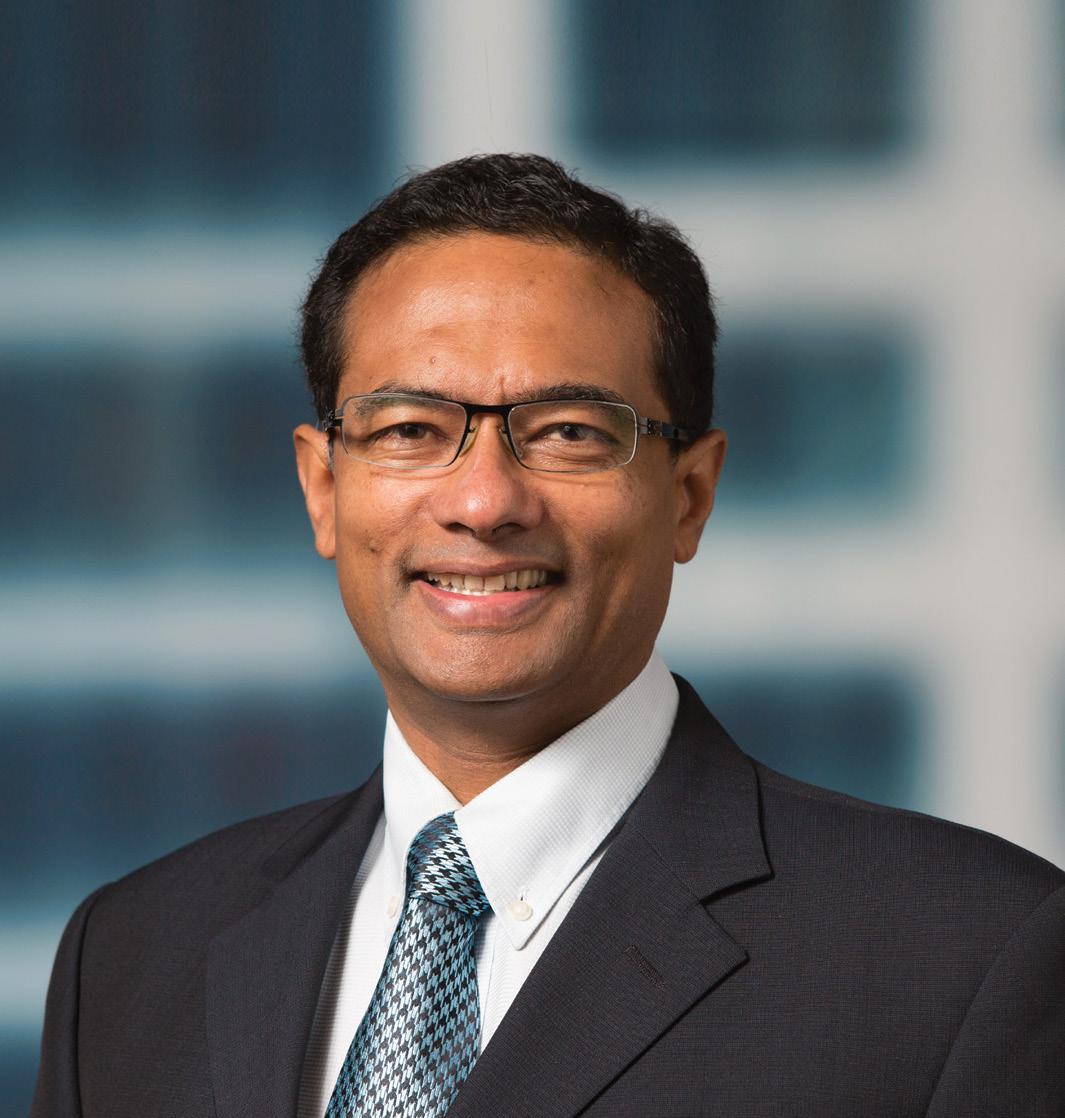














FEBRUARY 2019 1
Cyrus Meher-Homji, OAM
AUSTRALIA DAY HONOURS SYDNEY • MELBOURNE • ADELAIDE • BRISBANE • PERTH Level 24/44 Market St, Sydney 2000 • GPO Box 108, Sydney 2001 • Ph: 18000 15 8 47 WINNER OF 22 MULTICULTURAL MEDIA AWARDS
Peeyush Gupta, AM
Sujon Kumar Purkayastha, OAM
SYDNEY LINKING INDIA WITH AUSTRALIA FREE FEBRUARY 2019 n indianlink.com.au MELBOURNE
Jaswinder Singh Samra, OAM


2 FEBRUARY 2019 www.indianlink.com.au
Usha Ramanujam Arvind, Uma Nair, Vinaya Rai, Simmi Singh, Craig Jeffrey, Aparna Ananthuni, Senthill Sundaram, Anil Asthana, Ravinder Singh Jabbal, Sandip Hor, Gaurav Masand, Minal Khona, Auntyji
Shriti Sinha 0410 578 146
ADVERTISING
Charuta Joshi 02 9279 2004


Indian
The Lucky Country needs to move forward
BY PAWAN LUTHRA
The title of a 1964 book by Donald Horne, The Lucky Country, has been used by many to describe Australia - its ongoing economic progress, the prosperity of its citizens, the social structure of its society.

Yet, the author disagreed with this depiction and himself clarified what he meant: “Australia was a lucky country run by second rate people who share its luck. I didn't mean that it had a lot of material resources… I had in mind the idea of Australia as a [British] derived society whose prosperity in the great age of manufacturing came from the luck of its historical origins… In the lucky style we have never 'earned' our democracy. We simply went along with some British habits.”
Even way back in 1964, there were those lamenting that Australia was failing to emerge as an independent nation, free of its ties to the British, so that it could take its place in the world.
When the Federation of Australia was proclaimed on 1 Jan 1901 at Centennial
Park, Australia declared itself as a federal parliamentary constitutional monarchy with Queen Victoria at its apex as the Queen of Australia.
One hundred and nineteen years later, the world is a different place. Nationhood is an ongoing factor when talking about a national identity, not having an Australian Head of State does hamper the concept of a national identity. Do note it is always a lively debate about whether it is the Governor General, who holds the highest rank amongst the officers of the government, who is head of state, or is it Queen Elizabeth II.
It should be noted that internationally, for the purposes of protocol, the United Nations’ list of heads of state cites for Australia, "(Her Majesty Queen Elizabeth II)" in brackets, above the name and title of the GovernorGeneral, "His Excellency Sir Peter Cosgrove".
As we reflect on what it means to be Australian on Australia Day 2019, the debate will rise again on whether it is time we became a republic and had our own true blue Head of State, an individual who will rise above party politics and take decisions with integrity and honour.

Looking at our current Governor General Peter Cosgrove and incoming Governor General David Hurley, there is little doubt that these are men of honour.
But some 30 years ago, the 1999 referendum for an Australian Republic was defeated when 55% of voters rejected the proposal to become a republic (with a president appointed by a two-thirds vote in both Houses of the Australian Parliament.)
The issue, it seems, is what form the new model should take. Should the public have a say in the election/selection, or should it be left to an electoral college made up of parliamentarians, like in India?
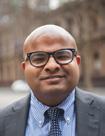
The Indian model has worked effectively. When the Constitution of India came into force on 26 January 1950, the offices of the Monarch and Governor-General were replaced by the new office of President of India. The President is beholden to the Constitution: his/her prime role is to defend and protect the Constitution of India and its rule of law. The President, unlike the Australian Governor General, needs to apply his/her own final judgement in upholding the Constitution and ensuring constitutionality in the actions of the executive or the legislature.
Over the last 72 odd years, India has emerged as a nation in its own right and with its own identity.
Coming back to Australia, perhaps a deeper look at this age-old debate is called for, especially in the light of the shifting geopolitical scenario globally.
FEBRUARY 2 019 3 Over 30 years of combined experience in law
speak uent Singhalese
have successfully assisted many clients
Sri Lanka,
Nepal, Vietnam,
and
For your convenience, we see clients at night , weekends and via email/skype so you don’t have to take leave from work. Immigration matters work visas family visas marriage and de-facto partner visas skilled migration for Australian graduates unlawful and illegal status resolution ministerial intervention AAT and Federal Court and all refugee and protection visas General-law matters retail lease leases tenancy disputes building disputes money matters divorces wills property sales business purchase tra c, court disputes and commercial matters 682 High Street Rd, Glen Waverley LexisNexis & Thomson Reuters UK Law author University Legal Practice Instructor Reg. Migration Agent MARN 1460628 Admitted to the Supreme Court of Victoria Enrolled Practitioner of the High Court of Australia Donald Gordon BA, LLB, TAE, GCTE Lawyer – Partner T : 03 9803 3768 E : info@sgsolicitors.com.au W : www.sgsolicitors.com.au skilfully resolving your legal problems Yashika Senadheera Lawyer – Partner Admitted to the Supreme Court of Victoria Admitted to the Supreme Court of Sri Lanka Attorney at Law and Notary Public ( Sri Lanka) Experienced in PUBLISHER
Luthra EDITOR
Anand Luthra SOCIAL MEDIA
We
and Hindi. We
from
India, Pakistan, UK,
Philippines
Fiji.
Pawan
Rajni
COORDINATOR
Neha Malude MELBOURNE
Preeti Jabbal CONTRIBUTORS
ADVERTISING MANAGER
ASSISTANT
monthly newspaper published in English. No material, including advertisements designed by Indian Link, may be reproduced in part or in whole without the written consent of the editor. Opinions carried in Indian Link are those of the writers and not necessarily endorsed by Indian Link. All correspondence should be addressed to: INDIAN LINK MEDIA GROUP Level 24/44 Market St, Sydney 2000 GPO Box 108, Sydney 2001 Ph: 02 9279-2004 Fax: 02 9279-2005 Email: info@indianlink.com.au
Link is a
EDITORIAL






4 FEBRUARY 2019 www.indianlink.com.au Australia Day Honours 8 24 18 26 17 COVER STORY SPECIAL FEATURES 17 STAGE Third Nature 18 KINDY KIDS I’m a big kid now 21 OPINION The importance of the Indian Ocean region 24 SPORT Australian Open 2019 26 TRAVEL Off the beaten track in Thailand CONTENTS
My sister has a promising future
Aditi’s family wanted to know the Navy was a smart career choice. Now Aditi’s joined they’ve discovered her Navy engineering education and training is also recognised by many industries outside of the Australian Defence Force.

But that wasn’t the only thing they found out. In fact, the Navy is supportive of all backgrounds, cultures and beliefs.
Aditi works in one of many diverse roles, with great career advancement opportunities, offering her a rewarding career as a Marine Engineer Officer that makes her family proud.
Find out for yourself. Watch Aditi and Priya’s full story. defencejobs.gov.au/family
FEBRUARY 2019 5
YOUR SAY
THE KING AND I
RITAM MITRA got up close and personal with the one and only Virat Kohli

Adrian Phoon wrote: He's lucky to have met you, Ritam!
Hussain Hanif wrote: Love your work, Ritam Mitra.
Virosh Poologasundram wrote: Great read. Looks like you got some good insight into Virat.
Maryanne Mukkattu wrote: That’s so awesome! Great work.
Sam Kronja wrote: The article gushed, but didn’t make it clear why “Unequivocally, Kohli is the best thing to happen to cricket - at least to its longest form - in a generation”.
Dimpy Singh Kanwar wrote: Good on ya, Ritam
Brett Penprase wrote: I met the man in the UK when I was touring. He is very humble, gracious and knowledgeable. The type of person you would like to catch up on any day of the week for a good old chat.
Sudipta Ghosh wrote: Beautifully written, Ritam Mitra!
TICKET TO CRICKET
RAVINDER SINGH JABBAL wrote about his experience as a photographer on the field at MCG.

Ekta Sharma wrote: Such an amazing read!
Nirav Solanki wrote: Big cheers to your photographer Ravinder Jabbal. Glad we could feature in your portfolio. Thanks!
Sunit Grover wrote: Totally love this! He looks so good!
SAY IT AGAIN
One of the great joys of visiting Australia is to mingle with the Maharashtrian community here and see how they are always there, for each other. Sure it is true of others too and tells me why communities are so critical.
Harsha Bhogle, cricket commentator

FARZANA AHMAD wrote about The Pink Sari Inc’s campaign at Sydney’s Pink Test.

Sari Sisters wrote: How amazing is this initiative? We're in awe of the amazing work the team at Pink Sari are doing to promote women's health in the South Asian Australian community. Check out the stunning visuals from their recent fundraiser with Sydney’s Pink Test as published in Indian Link. Shantha Viswanathan wrote: On behalf of Pink Sari Inc., I would like to convey our sincere appreciation to Indian Link for the brilliant coverage of our participation at the Pink Test 2019. Pink Sari's message is universal and the event gave us a great opportunity to promote our key messages relating to early detection and Breast Screening not just to our local viewers but international viewers as well. Thanks for introducing us to McGrath Foundation. It was a great partnership with mutually satisfying outcomes. Thanks also to Farzana for a great article and for also communicating our message so articulately to the readers. Thanks to you and to Indian Link for having supported us right from when this initiative commenced.
WHERE IN INDIA
We shared a picture of this landmark in India, and Sue Hambly and Himanshu Sharma guessed the right answer: Auroville.

Australian Open juniors 1989 was the first Grand Slam I ever played. 30 years later, still excited as ever to play at Melbourne Park. It’s the first place I believed I could become a professional tennis player! Always live your dream.
Leander Paes

6 FEBRUARY 2019 www.indianlink.com.au
THINK PINK
VIRAT’S BIG GESTURE
Deepti Ashish Sharma wrote: That’s awesome... congratulations Atharv and Nautiyal family
Sachin Nad wrote: Kholi steal hearts with gestures like this!
Anuj Nautiyal wrote: It was a big day for my son Atharv. Thanks Rajni. Kudos also to RJ Ekta. She made Atharv comfortable and calm on radio. The best part of the interview was when Atharv said to Ekta "I'll give you the batting pad when I become the best player in the world like Virat Kohli."

Prekshi Sundriyal Joshi wrote: Congratulations dear Atharv and proud parents
Vaibhav Srivastava wrote: Gift for a life time!
Vipul Nautiyal wrote: Virat Kohli knows the power of the Nautiyals!
Payel Bose wrote: Wow!! Congrats little champ; the smile says it all.
Hemant Dobriyal wrote: It was your talent Athrav Nautiyal which attracted Virat Kohli towards you! Well done, kid. May this inspire you more to become a cricket legend like him.
Swati Loshali Khanduri wrote: A cute gesture by Kohli towards his youngest fans. Congrats Atharv on being in the news and on TV.
WHO WORE IT BETTER?
Ekta Sharma wrote: Alia carries it beautifully… very elegant.

Sandhi Singh Narania wrote: Each has their own personality; I don’t see the point in such comparisons.
Samantha Gray wrote: The flowing fabric on Sophia makes her look better.

Words which constantly crop up in Indian newspapers to my constant surprise and delight: rascal, tiff, hitherto, tizzy, jibe, chit…
Stephen Dziedzic, Foriegn Affairs reporter for the ABC

CAPTION CONTEST
What’s the chitchat between Narendra Modi and Ranveer Singh here?

Vaarun Malhotra wrote: Ab ki baar fir Modi sarkar.
Jatiner Pal wrote: Aadat se majboor.
Haniyur Sampangiramaiah Subbaramaiah wrote: Two of the most talented actors of the modern era.
Vijesh Khanna wrote: Ab ki baar Modi sarkar? Bhau, tell me something I don’t know.
Samantha Gray wrote: Together we are salt and pepper.
Rahul Bhasin wrote: Hum dono key achche din khatam.
Yagnesh Rajendran wrote: How’s the josh? Bhau….
Ulhas Bhovar wrote: Election nazdee khain, ab to gadhon ko bhi gale lagana padh raha hai.
Kavita PatelH wrote: Namoveer.
Rajesh Kumar wrote: Modiwood.
Sachin Sharma wrote: We give the best bear’ed hugs.
Khyati Raval wrote: Real life Simba with reel life Simba.
Chitra Iyer wrote: Achche din aa gaye.
INDIAN
LINK POLL
We asked: Was it fair to kick Hardik Pandya and KL Rahul off the Indian team for their comments on Koffee With Karan?

Not fair: 23%
Totally fair: 77%
The budget for hosting this year's festival is 28bn rupees ($397m; £311m), and over 49 days, visitors totalling more than the combined populations of Britain and Spain are expected to visit.
BBC News, about the Kumbh Mela

FEBRUARY 2019 7
RAJNI ANAND LUTHRA reported on six-year-old Atharv Nautiyal’s surprise gift at the SCG
54% Sophia 46%
ALIA BHATT OR SOPHIA VERGARA IN ZIMMERMANN Alia
AUSTRALIA DAY HONOURS

STRUGGLE, SUCCESS AND SUCCESSION
Sydney’s PEEYUSH GUPTA, AM
For significant service to business, and to the community, through governance and philanthropic roles
The first things that strike you about Peeyush Gupta are his youthful looks and humility. A few minutes into the conversation, it becomes clear that he is also an excellent listener, his ability to ask strategic questions showing a very intelligent and curious mind at work.
These among other qualities led Peeyush, along with four other partners, to build a well-respected financial advisory and research firm IPAC, and subsequently sell it to AXA for an estimated $200 million.
Along the way, Gupta won industry awards, and served the community in his role as director or trustee of a number of professional, educational and philanthropic institutions, ranging from NAB, LINK, MLC, AMP, SBS, icare, Murdoch Books, Western Sydney University, UNSW Business School and Ascham School.

Here, this extraordinary Indian-Australian tells us about his eventful journey.
Coming to Australia
Dad was in the Indian Foreign Service, so our family lived around the world, moving every three years. We arrived in Canberra on Dec 13, 1975. I completed Years 11 and 12, and was one year through my first university degree when Dad was posted again. I stayed on to finish my degree, and then obtained PR. My brother also came back a few years later to do his uni studies. Dad and Mum returned to Australia to live permanently some 20 years later after Dad had retired.
Due to the nature of Dad’s job, I went to six schools (in London, Kathmandu, Belgrade, Jaipur, Delhi and Canberra) before I graduated from high school. I wanted to be a doctor initially, and got into Medicine at Sydney University, but could not afford to move from Canberra to Sydney as an overseas student (Canberra did not have a medical degree in those days). So I did a degree in Computing Studies instead initially. After one year of work, I went on to do an MBA in finance at UNSW. Later in life, I did senior executive programs at Harvard and London Business Schools. Where
it all started
For some reason, I thought no one would give me a job, so thought I’d have to
start my own firm, which I did with some partners whilst I was doing my MBA. We called the firm IPAC - Investment Planning and Advisory Company. Two of my partners were Sri Lankan by heritage, although one had lived most his life in Australia, the other a lot of his in England.
Our biggest impediment initially was not so much our ethnicity as our youth: the four partners were all in their mid-20s at the time, and inexperienced. However, the quality of our research attracted large corporate clients (eg. the banks and life insurance firms), and we quickly gained a reputation for being thought leaders in the emerging wealth management industry. The credibility of having some of Australia’s largest financial firms as clients of our research, in turn, gave us credibility with other clients, which helped build the business.
Success was not overnight, it took a patient 20 years to build the firm! By luck rather than design, the partners had complementary skills (sales, marketing, operations), similar values, and mutual respect, so the partnership prospered over time.
We sold the business when I was in my early 40s, so I did not need to work for money thereafter. Nonetheless, as IPAC’s journey was not finished, I worked on for another seven years for the multinational firm AXA to whom we had sold our business. When I turned 50, I transitioned from a CEO role to a ‘portfolio’ role, consisting of governance roles.
The challenges and rewards of being on various Boards
Generally, I accept directorships with firms whose mission I am passionate about. Eg, SBS as I believe the role of quality public broadcasters to be fundamental to the sound operation of democracies; Western Sydney University as I believe education is a key pathway for people, especially migrants, to succeed in life, and of course my various roles in the banking and financial services sector, as the effective creation of credit and deployment of investment underpins the economic success of any country.
All jobs have periods which can be
frustrating, and being a Director is no different; however, if you believe in the underlying mission, it gives you the strength to persevere through the difficult times.
Being on the Australia Day Honours List
I felt honoured and grateful. Life is in three phases: Struggle, Success and Succession (or legacy). Being in the legacy phase of my life, I feel the honour recognises the contributions I have made and am seeking to make to the issues which I am passionate about, including the finance industry, education and proper governance and stewardship.
On future plans
My parenting responsibilities are not yet over, and my children are still in high school or university, so supporting them to complete their education and get settled into careers remains an outstanding duty. Professionally, I would like to support each of the firms on whose boards I serve to continue to fulfil their mission and grow.
This includes one of the leading firms in quantum cybersecurity, where I would like to see world-leading Australian technology being successfully commercialised.
Advice to new migrants
Success generally derives from attitude, capability and hard work. Most migrants have the will and the drive to succeed as they have no other fall-back. To that, you need to add some skills or capabilities (generally, but not always, through education). And then hard work, over a period of time. Having integrity, good values, and humility also helps (as luck is often important in success too!). Australia is a wonderful country to live in, and provides the opportunity for all who are prepared to put in to succeed. I believe it is important for all people to make some contribution to whatever community they live in, so I would encourage all migrants to give back in whatever way they can to causes and communities that are important to them.
Pawan Luthra
8 FEBRUARY 2019 www.indianlink.com.au
ACCOLADES
Pianist, musicologist and record executive Cyrus Meher-Homji has carved a niche for himself in the classical music scene in Australia. He has made outstanding contributions to the record industry and to the advancement of classical music, especially with his own record label Eloquence. He talks to us here about his life in music

What drew you to music, classical in particular?
Growing up in Pune, I was surrounded by classical music. Both my parents enjoyed it and my paternal grandfather had an enviable record collection. He also played the violin (and dealt with the buying and selling of instruments) in his spare time. He was a dentist - staring into people’s mouths wasn’t a profession I was remotely interested in pursuing! – and as an amateur violinist also a very good friend of Mehli Mehta (Zubin’s father). Zubin, although based in Mumbai, would take theory lessons from an Italian violinist, Oddone Savini, who had rented premises on my grandparents’ property in Pune, so classical music had always been in the air. I was passionate about it, even obsessive, and started piano lessons at the age of five. I collected and listened to whatever records I could get my hands on and still vividly remember various aunts who encouraged me and gave me records to listen to. I always knew that classical music had to be a career path, but realising it was, at the time, another thing…
Tell us about your work at Universal Music Australia, and about Eloquence, your record company.
I am General Manager of the Classics & Jazz division at Universal Music Australia. I work extensively with artists and repertoire. I work with my team to market and publicise recordings released by our parent companies – Decca, Deutsche Grammophon, Verve, Blue Note, ABC Classics. I sign artists to the Australian label. Touring artists is a new and growing part of our business.
Eloquence was launched in 1999 to make great classical recordings from the rich archives of Decca and Deutsche Grammophon available to the wider public at reasonable prices. As the label has developed, it has explored the farthest recesses of recording history, unearthing recordings previously only on vinyl (or even shellac) and making them available on CD, and of course, digitally, on download and streaming platforms - many for the first time, internationally. Over 2000 titles have been issued. I’d previously launched a classical music magazine, Soundscapes, in
MR ELOQUENCE
Sydney’s CYRUS MEHER-HOMJI, OAM
For service to the performing arts, particularly through music
1993, shortly after graduation. It lasted six years, aged me a good twelve (entering the shark-infested waters of publishing, having trained as a pianist and musicologist was another experience!); it became a victim of publishers’ whims, and when it folded, I needed something like it that I could nurture, and Eloquence provided the perfect replacement.
You’ve been a presenter on radio and TV, a teacher, producer, writer and critic. Which role have you enjoyed the most?
I think all these roles feed into each other. At the heart of it is my passion for music and my great will to communicate this to as wide a public as possible. On radio, and now on TV/online with my program Good Listening (SBS and Foxtel) I introduce new classical recordings to the public. My lecturing days at universities in Western Australia, were yet another outlet to share this wonderful world - likewise critically assessing it when I wrote for The Australian and for specialist international magazines. As producer, I want to harness great, new, exciting, different and creative talent - again - so it could be experienced to its fullest. I’m sure that all these activities are linked - the essence of all being communicating the joy and wonderment, the discovery and rediscovery of music. I trained as a pianist, and the discipline that demanded is something that’s been rechannelled into my activities as a record executive today; my lecturing prepared me for public speaking and presentation, essential in my current role; my research and writing helped me develop techniques to delve into the Aladdin’s Cave of recordings from the past and to help revive them and write about them.
How would you advise young Indian-origin Australians regarding a career in the arts? Is it easier now than when you began?
Find your passion and create your own niche. I never went for a traditional job in my career. I started a magazine because there was a gap in the market and it was the perfect way of harnessing the wonderful world I was involved in. That brought me in touch with recording companies around the world, as Soundscapes enjoyed international circulation. You know, there was a wonderful man who was responsible for bringing me to Australia as an eighteenyear-old: Sir Frank Callaway, one of the great men of music in this country. I remember my parents - like all doting parents, wondering what kind of a living I would earn having chosen a, shall we
say, untraditional path - asking him where he thought I’d end up in order to earn a crust. And he said to them that they needn’t worry. That I’d find my own path and my own channels and somehow turn them into a profession. He was probably right. But you need these guardian angels in your life, someone to guide you and encourage you. Sir Frank, his successor at the University of Western Australia David Tunley, my piano teacher in Sydney Elizabeth Powell, my loving parents, and presently, our company President George Ash, have all been seminal to the development and evolution of my career. They’ve given me wings and encouraged me to fly - sometimes I might fly too close to the sun, but better that than staying dormant. Is it more difficult today than it was in my own time? Yes, there is a great deal more competition today, but that’s because there are more platforms and in turn, more opportunity.
Are you involved with the music scene in India at all?
I do know about the wonderful work the Mehli Mehta Foundation under Mehroo Jeejeebhoy does in bringing musicians, orchestras, great artists to India. As a child, we regularly went to recitals (and occasionally orchestral concerts), and it was seminal to my development. I’m glad the tradition has been kept alive. One of my closest musical friends, Roxane Anklesaria, is now one of India’s leading piano teachers. Pianists like Pervez Mody (we shared a piano teacher, Farida Dubash) have carved a wonderful career for themselves. And then, of course, there’s the doyen of all Indian-born classical musicians, Zubin Mehta, whom I regard as a friend, and the reissue of whose magnificent recordings for Decca was one of the first projects I undertook when launching the Eloquence label.
But, of course, the scene has expanded greatly. One of the newest forms of classical music is ‘neo-classical’, blending alternative music with classical, and led by
such composers/performers as Ludovico Einaudi, Joep Beving, Max Richter and Peter Gregson. I think a lot of traditional instrumental Indian classical music could morph or cross-fertilise into this area and it’s something I’d really like to explore. This new genre/movement enjoys links with health, meditation, relaxation, and I can just hear how beautifully Indian instruments could be integrated into this soundworld. Given that so much music discovery is led by mood, this would work perfectly. More traditionally, Anoushka Shankar and Norah Jones, both children of the great Ravi Shankar, are signed to us as part of the Universal Music Group.
What do you hope to achieve with your OAM honour?

When I tell people that I’ve been working for Universal Music Group for nearly 21 years they often gasp in surprise. How can anyone last so long in such a rapidlychanging environment? The answer is that you’re never the same two months ago as you are today. You can’t afford to be. Every month or week, even day, is a new experience for me. New platforms are embracing the styles of music I care about, making it so much more accessible and discoverable. We have moved into the roles of presenters, so that we’re not just making, marketing and distributing records, but also giving the public to see these artists in concert; regional touring in Australia is a very important part of our gambit, as it allows us to take our musicians into areas sometimes bereft of this line of entertainment. We’ve started a classical publishing division to bring composers, new and old, into our family. We’re producing more and more content to demystify, defrost classical music. I am humbled to have been honoured in this way, and hope it might further assist my efforts to completely remove the sometimes self-imposed shackles that western art music finds itself bound by.
Rajni Anand Luthra
FEBRUARY 2019 9
Photo: Universal Music Australia
AUSTRALIA DAY HONOURS
A FAUJI FERVOUR TO COMMUNITY WORK
Adelaide’s VIKRAM MADAN, OAM
For service to multicultural affairs
Major General Vikram Madan (Retd) has won major awards in his distinguished military career in India, including the Vishisht Seva Medal (VSM) not once but twice.


However, he says being awarded the OAM in his adopted country feels like an even greater achievement, as it is for his voluntary work in the community.
Vikram Madan had been coming to Australia occasionally to visit his sisters who are settled here. On one such visit in 2006, he met Veena. Within a few months, he had decided that he wanted to spend the rest of his life with her, and they got married the following year.
Settling down in Adelaide, Vikram closely observed the Indian community around him. It was a time when the Indian community was growing very quickly and there were challenges arising from this. Coming from a
service background in a leadership capacity, and having a passion for community work, Vikram Madan jumped in to become Vice President of the Indian Australian Association of SA (IAASA) in 2008.


He went on to become President. During this time there was a lot of conflict in the wider community due to the sudden, huge influx of migrants and students from India. Unfortunately, there were some violent incidents towards international students and taxi drivers.
In his role as IAASA President, Vikram did some outstanding work to help and support the victims and their families and advocate for quick resolution of the issues.
Seeing his commitment and leadership, the Government appointed him to the Board of SAMEAC (South Australian Multicultural and Ethnic Affairs Commission).
As a SAMEAC member for the last eight
years, Vikram has advocated on behalf of all ethnic communities and says he has learnt about the “needs and aspirations of all our multicultural communities, and assisted them as well as Indian organisations to find pathways to settlement.”
Vikram is involved in many other organisations and committees including Multicultural Aged Care where he is the Chairman, Passenger Transport Standards Committee, OzAsia to name only a few. But one of his major achievements, he says are the fundraiser he organised for the Nepal Earthquake where they raised $43,000.
Another achievement he speaks of with much pride, is his success in securing for
CARING FOR OUR SENIORS
Indian defence veterans the right to march in the ANZAC Day Parade in South Australia.
In India, Madan gave 41 years of his life to the Indian Army. In his career he saw action in the Bangladesh war, in Sri Lanka, and during the insurgency operations in India’s north-east. He served eleven years in high altitude postings including Kargil at the India-Pakistan border, and commanded a Division in Punjab/J&K, fighting militancy.
“Community work in a foreign land is full of challenges,” Madan told Indian Link “I could not have done this without the support and encouragement of Veena and my family.”
Vinaya Rai
Adelaide’s VIVEK PADMANABHAN, OAM For service to aged welfare
Say the word ‘Padman’ in South Australia, and the thought that comes to mind is Aged Care. And Viv Padman, who started the business, is highly regarded not only for establishing some of the best aged care facilities in the country but also for his involvement in the Aged Care industry at state and national levels.
Viv has been associated with the Australian Aged Care Association continuously since 1983, being a Board Member for many years and then Chairman.
He has also been on several Ministerappointed committees involved in the development of policies and guidelines.
Viv Padmanabhan established Padman Health Care in 1984 with a small facility in Henley Beach. “It was an opportunity to own our own business,” he told Indian Link, “as I felt there were plenty of opportunities for growth.”
And grow they did, not only in size but in quality of care and concern for the welfare of the elderly. Vivek says they wanted to improve standards and “provide the care that we would want for our parents.”
Vivek’s parents moved to East Africa from Kerala as teachers. Following political upheaval in Uganda, the family moved to Adelaide in
1973 when Vivek was 15 years old.
The family got involved in the small Indian community and Vivek’s father became President of the Indian Australian Association of SA (IAASA). It was a great introduction to young Vivek in community work, himself working with association as a young adult. He also supported the Adelaide Malayalee Association (AMMA) too especially in its early years.
He was a regular broadcaster on Indian Community Radio on 103.1FM too.
In the wider community, Vivek was a member on several boards and committees. “All these were in a voluntary capacity,” he says, “which helped me contribute to the needs of the Aged Care Industry to a much greater extent.”
Even though he sounds proud when he speaks of some of the “exciting” facilities he has built, his humility shines when asked what he considers his greatest accomplishment.
“I think to have made a difference to the quality of life of our residents in the last years of their lives, that is what is most important to me.”
“There is a lot of emotion involved when a person has to leave their home. They are quite fragile. We try to make the transition as seamless as possible with exceptional care and comfort.”
Viv Padmanabhan credits his success to his wife Florence’s role in the business. She is Executive Director of Nursing. “Florence was a big part of the business,” he says, “and all credit goes to her for making it so successful.”
Vivek has started a luxury aged care service called Premier Health Care in which his daughters, Reena, a lawyer and Sunita, an oncologist, are also involved.
Vivek’s passion for his work comes through loud and clear when he talks about it.
This latest honour “is very humbling”, he says, “because it is recognition for doing something constructive for the community. This was also my late father’s passion, which he carried out in India, Uganda & Australia.”
Vinaya Rai
10 FEBRUARY 2019 www.indianlink.com.au
ACCOLADES
THE PRODUCTIVITY OF OUR LANDSCAPES
Shepparton’s MENON PARAMESWARAN, OAM
For service to primary industry

Having just returned from his native Kerala, Dr Menon Parameswaran, agricultural scientist, cannot stop talking about the state of affairs there especially after the devastating floods of August last year.
“Climate change is an important issue to consider in India,” he said to Indian Link. “Floods and drought are increasing in frequency, and the untimely arrival of the monsoon is causing confusion about cropping etc.”
Education is the key, he stressed. “People should be educated about the ramifications of climate change and the conservation of natural resources. The carrot and stick approach should work well in my opinion: give incentives to people, or be strict with polluters.”
“I’m very fond of India,” he hastened to add, “and if I had the power and authority, these are the thigs I would like to do.”
For nearly 50 years in Australia, environmental studies have been Dr Parameswaran’s life.
A top-ranking student at the University of Kerala and Pantnagar University in Nainital, India, he came to Australia in 1971 with a PhD fellowship at the University of Adelaide. His doctoral work on wheat agronomy set new benchmarks in the wheat industry and not only won him much acclaim, but also boosted state yield by 20%.
He then spent many years in research and training in natural resource management at
the University of Melbourne, his skills and expertise leading to contributions in the field of primary industry.
“Notable amongst my contributions was my research with the Jerusalem Artichoke, a tuberous root vegetable like the tapiocca,” Dr Parameswaran described. “I used it to create a fermentable substrate to produce ethanol, to be blended with petrol for use in automotives. It received wide acclaim.”
As well, his research on land and water salinity, irrigation and drainage, and strategies to conserve water (“such a precious resource”) have been published extensively in scientific journals.
So how would he advise India?
“India must step up its use of scientific technology in its primary industry,” he observed. “For instance breed new varieties suited to the environment, instead of using the same varieties everywhere – this will enhance crop yield and productivity. Tamil Nadu seems to be doing this to some extent but in Kerala, my observation is that commercial agriculture is dying out. They seem to be focussed on promoting tourism, while buying food from other states.”
And what could Australia be doing better?
“We need to encourage STEM education. We need more people to take up STEM careers – perhaps from the Indian community, because we come for a land of eminent mathematicians, and so must continue the tradition to the betterment of our adopted country. We must encourage
women especially – I believe in cultural and gender equality. The participation by women in STEM is much lower than expected and this has to change. As regards the quality of maths and science education in this country, the system seems to be geared towards achieving a high score rather than actual learning. And the lack of good teachers is a concern too.”
Having now retired from his academic career, Dr Parameswaran continues to lead an active life with involvement in the community. He sits on the boards of hospitals as well as educational and business institutions such as Shepparton’s Community Health Service, Australian Institute of Agriculture Science and Technology, Australian Institute of Community Practice, Victorian Multicultural Business Advisory Council, and the Adult, Community and Further Education Board. He’s also a great proponent of multiculturalism. “Shepparton is a great
centre for government settlement programs for migrants so there are Afghani, Pakistani, Iranian communities here. I enjoy mingling with them and attending their events, and encourage fellow board members to welcome these people as well.”
It is no wonder that The Sun Herald recently ran a cartoon of him as a ‘man with many ideas’.
About his OAM, Dr Parameswaran remains deeply humble. “It is a great honour. We shouldn’t be working for awardscommit yourself to work of the community, that itself is the award. But without doubt my OAM will be a catalyst to do much in future. Perhaps it is God’s message that other people are looking at my life!”
This Australia Day, Dr Parameswaran will be celebrating not just the OAM honour but another one as well: the Shepparton Australia Day Committee has named him the Citizen of the Year.
 Rajni Anand Luthra
Rajni Anand Luthra
TAKING MEDICINE TO THOSE WHO NEED IT MOST
TANDON, OAM
Respiratory medicine specialist Dr. Maharaj Kishore Tandon took his MBBS (1961) and MD degrees in Agra, India, and then moved to the UK where he underwent specialist MRCP examinations in London and Glasgow. He then came to Melbourne as a guest of the Veteran Affairs Department, where he worked as a respiratory physician, before moving to Perth with his family in 1969. He worked in the Repatriation Hospital until 1994.
Dr Tandon has received an OAM honour this Australia Day, for his community service, particularly those which help provide medical aid to those who are disadvantaged. His professional links have extended across a wide spectrum of institutions in his long career, including Red Cross Australia, Notre Dame University, OXFAM, The Fred Hollows Foundation, Caritas, Wheelchairs for Kids, St Vincent de Paul, World Vision, Doctors Without Borders and Australasian Palliative Link International.
“One of my favourite activities in this regard
was conducting Equal Health medical camps in Tamil Nadu, India for 9 years (20022011), but unfortunately could not continue following a stroke,” Dr Tandon told Indian Link.
He then continued with his passion for serving the underprivileged, by working with Indigenous Australians from rural and remote Australia.
Dr Tandon’s strong humanitarian considerations have led him to believe that the cost of medical care should never be a barrier for those who could benefit from his treatment. Dr Tandon uses Medicare’s bulk-billing as much as possible, which is particularly commendable for a specialist of his calibre and level of expertise.
Dr Tandon is a much loved and regarded member of the Indian community in Perth. He was a founding member of the Indian Society of WA (ISWA) in 1972 before becoming secretary, and has been a patron since 2008. He is currently President of the Catholic Doctor’s Association, and is Chair

for Charity Affairs of the Australian Indian Medical Doctor’s Association which has been growing in influence in recent years.
“I am very honoured to receive this recognition and see it as encouragement and enablement for me to continue serving more deserving members of society,” Dr Tandon said about his latest honour.

His advice to new migrants?
“Do the best you can and you will be rewarded in time.”
Uma Nair
FEBRUARY 2019 11
Perth’s MAHARAJ
For service to the community through a range of roles
KISHORE
AUSTRALIA DAY HONOURS
BEATING PANCREATIC CANCER
Sydney’s JASWINDER SINGH SAMRA, OAM
For service to medicine as a pancreatic specialist
One of Australia’s most experienced pancreatic surgeons Jaswinder Samra has been recognised with Order of Australia Medal (OAM) for services to medicine. With extensive academic, clinical and research interests in the field of pancreatic cancer, Professor Samra has been associated with Royal North Shore Hospital, North Shore Private, The Mater and Macquarie University Hospitals.
Pancreatic cancer, the tenth most common cancer in adults, is often too advanced at diagnosis and complex to manage clinically, requiring an aggressive multi-disciplinary approach.
His cutting edge work at Royal North Shore’s internationally renowned pancreatic surgery unit has led to some of the highest success rates in NSW.
Additionally, he co-founded the Australian
Pancreatic Centre, combining breadth of knowledge and depth of experience for best possible patient outcomes.
A key collaborator at the Australian Pancreatic Cancer Genome Initiative, Prof Samra is also a member of the Australia and New Zealand Hepato-Pancreatico-Biliary Association.
“This award pays tribute to the dedication, hard work and insight of the team at the Pancreatic Cancer Centre. I’ve also been blessed in working with esteemed doctors at the Royal North Shore hospital,” Dr Samra told Indian Link
Born in the UK, Dr Samra spent his formative years in Punjab, before returning to UK to complete his schooling and went on to attend Manchester and Oxford Universities.

“My life has taken me across the globe
RETAIL TO RANGBHOOMI
from UK, India and now Australia for the past 22 years,” he fondly reminisced.
“My affiliation to Australia is heartfelt and strong. Both personally and professionally my life in this country has been richly rewarded. I met my wife Brijinder Randhawa here,” he stated.
“Indians in Australia are a small yet dynamic and robust community. I take pride in the contributions we make in all walks of life as Australians,” he added.
Dedicating the award to his late mother Sukhvir Kaur, a remarkable woman who has left a lasting imprint on his life, he believes his upbringing has given him a unique perspective on what it means to be Indian, British and Australian. “I love many things
Melbourne’s MANDAR MADHUSUDAN VAIDYA, OAM
For service to the performing arts
and community,” said Mandar who feels ‘absolutely blessed and honoured’ to receive the OAM for his lifelong passion.


Mandar’s love for theatre began at the age of seven when he started accompanying his mother to her drama rehearsals. He was fascinated by the vibrancy of the sets and started replicating it in his primary school years by creating kids’ versions of the professional plays he saw.
The acting bug continued throughout his school and university days as he frequently produced, acted or directed plays. He considered himself very fortunate to have trained under the renowned Vikram Watve during his formative theatrical years.
began work as a data analyst for Retail.
It was time to get back to his creative pursuits. For nearly a decade he continued to act, direct, sing and dance in many programs with the local Maharashtra Mandal groups.
“It was hard to dedicate so much time consistently; especially directing full length plays,” said Mandar sharing his theatrical journey.
“A play with a run time of 2-3 hours can take on an average 3 months of rehearsals, taking up every weekend from 9 am-5 pm. Dedicating that time to my art, however, offered me great satisfaction. Theatre thus became ‘a part time job’ for my soul,” said Mandar.
about Australia, not least its egalitarian, humour-filled zest for living. I am also proud to be Punjabi. My father Surinder Singh embodies all that I admire of my Sikh heritage,” he noted.
Speaking about his enduring passion in the management of pancreatic cancer patients, Dr Samra acknowledged that the task is enormous.
“It gives me tremendous satisfaction that I have been a part of national and international collaborations to diminish the burden of this disease. There is much more work to be done and I feel immensely privileged to work with outstanding colleagues in this endeavour,” he concluded. Usha
Ramanujam Arvind
Melbourne based retailer and artist Mandar Madhusudan Vaidya has added another accolade to his list of achievements, being awarded with this year’s OAM for service to the performing arts.
Making the rich tradition of Marathi theatre ‘accessible and enjoyable’ to Melbourne audience has been a joyful cultural experience for this performance artist.
“Theatre to me is living in a meditative state of life. It helps to pause and rest my mind within my daily routine of work, family

During his last year in university in 1994, he formed Reaction, a theatre group along with some like-minded artists. Together they produced plays such as Bumbai Ke Kauvve (Hindi), Pratibimba (Hindi and Marathi), Amhi Latike Na Bolu (Marathi).
According to Mandar his group performed 250 plus shows, mainly at the iconic Prithvi Theatre. They did several performances at the Tata National Centre for Performing Arts (NCPA) theatre and toured Maharashtra and Delhi.
Finishing university with an MBA in Marketing, Mandar migrated to Australia in 2000. In 2002 Mandar took a postgraduate diploma in IT from Swinburne University and
In 2012 he founded the not-for-profit Kalavishkar, where he directed Hindi plays and conducted acting workshops. His wife Manasi and daughter Soumya continued to support him in his endeavours.
In 2015 other theatre enthusiasts joined him and they formed the Natyadarpan Indian Theatre Academy (NITA). Collaboratively they developed their artistic and acting muscles.
Natyadarpan is a community organisation that aims to bring diverse artists under the same roof to project reflections of life experiences in a theatrical form. They conduct acting workshops and present dramas regularly to Melbourne audiences.
“We help developing actors, directors, writers, translators, singers, background music
providers, stage light and sound specialists, promoters and set designers, covering almost every aspect of theatre,” said Mandar.
“I dedicate my award to the 100-plus members of Natyadarpan who have supported our endeavours, volunteered and worked tirelessly to take our theatrical activities to another level,” said Mandar.
“Theatre adds to the rich value system and culture of India and sharing it on one common platform aligns to the Indian philosophy of Vasudhaiva Kutumbakam or world family,” he continued.
Building a bridge between a community of artists and the broader community, Mandar continues to commit himself to creating theatre that goes beyond our everyday lives.
Preeti Jabbal
12 FEBRUARY 2019 www.indianlink.com.au
ACCOLADES
PATIENTS, FIRST AND FOREMOST
Sydney’s SUJON KUMAR PURKAYASTHA, OAM
For service to medicine as an obstetrician and gynaecologist
Order of Australia Medal (OAM) recipient, Dr Sujon Kumar Purkayastha’s 40-year stint as an obstetrician and gynaecologist has been demanding and rewarding in equal measure.




“It’s those sacrifices that make receiving this award so satisfying. It means more than what I could adequately express to everyone who has been part of my life, none more so than my wife Aruna, son Shimanto and daughter-in-law Shivangi,” he told Indian Link.
“I am proud, humbled and honoured to be a recipient of OAM. It’s an incredible feeling to be recognised for contribution to their community and country at large. I have lived here for 42 years and three generations of my family are blessed to call this wonderful and beautiful country home. The OAM is a testament to the fact that Australia recognises dedication and honesty,” he added.
Serving the rural communities of Hunter and Goulburn in both public and
private settings, the Shillong-born medical professional, who was trained in India, Australia and the UK, was warmly welcomed by the people of Australia when he first arrived in seventies. He reciprocated by making “a concerted and conscious effort to return to the community, especially in terms of participation and consideration”. Honesty, commitment and dedication have been the cornerstones of his successful medical practice.
He is grateful to the people of Goulburn as well as colleagues and staff at Goulburn Base Hospital for giving him an opportunity to serve them and more importantly for the friendship, fostering a deep sense of belonging. “And of course, all my patients that I had the pleasure of getting to know over the many years I spent in that wonderful part of Australia. Many have expressed pride and happiness and I am glad they can enjoy the award with me,” he continued.
Looking after the individual needs of every patient entrusted to his care to the very best
PRACTISING COMPASSION
"Iwas ecstatic,” Dr. Sundar tells Indian Link, about being informed that he was to be honoured with OAM this year. “I came here as a young practitioner in 1974 - that’s 40 years ago - and worked hard to be where I am today. So it feels absolutely fantastic to receive this recognition.”
Dr. Sundar, 75, was born and raised in Ooty (India), and completed his education in Pondicherry and Delhi. “I was working in Delhi University, researching on cirrhosis of the liver in children. At the time, an Australian professor, Prof McDonald saw my work and invited me to be a resident in Perth’s Princess Margaret Hospital and learn more about the disease in Australia’s Aboriginal as well as other communities.”
Two years later, he moved to Newcastle Hospital and worked as a registrar in paediatrics. Over the years, after having worked across the country - Campbelltown, Liverpool, Kiama and more - Dr. Sundar now practices at Toongabbie at Dr Sundar Family Medical Practice. But how did the change from paediatrics to general practitioner happen? “I wanted to expand my repertoire and I thought I’d get to work with people of all ages, right from birth to old age.”
Dr. Sundar, now a GP for 40 years, also talks about treating diabetes, the most highlyprevalent disease among Indians in Australia.
of his ability has been the key dictum of his professional journey. “It is doubly important that we contribute to the betterment of our country so our grandchildren are the beneficiaries of our efforts,” he concluded.
Dr Purkayastha retired from full time
During his time with Australian Indian Medical Graduate Association (AIMGA), Sundaram worked relentlessly every year to treat members of the Indian community. “I noticed that Indians had high levels of blood sugar, obesity and hypertension. In one case that’s particularly astounding, I found a 9-yearold boy with Type-1 diabetes. That spurred me on to conduct check-ups in different communities every year. I began working with Indians, and then Filipinos.”
He would even sit at the local shopping centre now and then for an hour and offer to do medical check-ups free of cost. “Of course, I didn’t know then that I would receive an award for it,” he laughs. “At the time, I just wanted to do something for the community.”
Dr. Sundar has been part of numerous associations through which he has actively contributed to the society, such as Australia India Medical Graduate Association, the AASHA Foundation, Blacktown Medical Practitioners Association, NSW Indian Welfare Association, United Indian Association and Tamil Manram.
Of these, the UIA and Tamil Manram are especially close to his heart. “As part of Tamil Manram, my wife (Rani) and I started sponsoring the Tamil school. That was 27 years ago and it had only one student. Today we’ve got 300 students. I’m so proud that we were able to sponsor them back then.”
work in 2017 to enjoy the company of his granddaughter Shanaya. He is therefore particularly delighted to share this happiness with her in the years to come.
Usha Ramanujam Arvind
He says about UIA, “It houses so many multicultural groups where people can get together, celebrate festivals together. Our children grow up together, those things are so important.”
So what does the future hold for Dr. Sundar?
“I want to continue my work in diabetes for Indians here. I’d also like to get more involved in counselling for elderly parents who are victims of domestic violence. Another cause that I feel very strongly about is children being exposed to violence through films. It’s very disconcerting to me when I see parents bringing toddlers and young kids to violent movies. I’d like to do something about it.”
Dr. Sundar adds with a smile, “I won’t be retiring. Not any time soon.”
Neha Malude
FEBRUARY 2019 13
service to the
Sydney’s SUNDAR SUNDARAM, OAM For
community through a range of roles
Creating a cultural mosaic to champion an ideal of multiculturalism, Melbourne artist Nawal Kishore Moudgil has much to celebrate this year.
His School of Indian Music and Dance Australia (SIMDA) will mark its 25th year in 2019 and continue to add flavour to the vibrant city of Melbourne.
As one of the first few institutions to offer music, tabla, harmonium and voice training tuitions in this city, SIMDA has changed over the years but is still going strong, according to its founder NawalMoudgil.
“We started in 1994 when learning to play Indian musical instruments like tabla, harmonium etc. was in demand,” Moudgil explained. “With the advent of new technology like MP3 the musical scene has changed and we have adapted accordingly. I now also impart online training and our learning session demand averages at 10 weeks.”
He continued, “Whether it’s work or volunteering, teaching Indian music in Australia has been an incredibly rewarding experience of cultural exchange that has inspired me to continue. Music is a universal language with the power to cross nationalities, languages, and age.” Knowing and preserving the various cultural values that exist, he observed, serves to bring about an understanding and tolerance between people and countries.
Much awarded for his work in creative and performing arts industry, Moudgil received the Sir John Monash Volunteer of the Year award last year.

He has also been awarded the Victorian Multicultural Excellence Award in 2017 and 2016, Sir John Monash Community Award in 2016 and Serendib SriLankan Spirit Award in 2016.

Moudgil recently finished directing a full day Sawan Multicultural Spring Festival
A life devoted to the arts
Irfat Begum hosted the event by skilfully navigating through the large number of performances.
“Over the years we have collaborated with people from over 44 different ethnic backgrounds,embracing the diversity that makes Melbourne such a dynamic society,” said Moudgil.
Adding another layer to the wealth of multicultural arts on display, he also directed the week-long Satrangi Seven Colours Arts & Film Festival (SSCAFF) held in June last year.
The objective of the festival was to promote cultural diversity, community harmony and intercultural awareness. “This festival also aimed at strengthening music, film and cultural ties of the Victorian/Australian industries with India and globally by recognising the local talent and productions through a shared community platform,” he claimed.
The SSCAFF festival recognised local leaders who served the Australian multicultural community by promoting their cultural heritage. They were awarded the Yash Chopra SSCAFF award as a tribute to SKG’s patron Indian film legend, late Yash Raj Chopra.

As he gears up to direct the 2019 Spirit of Harmony Multicultural Festival (SHMF) on Sunday, 17th March, Moudgil shared his plans with enthusiasm. He revealed that SKGA Inc in association with Victorian Multicultural Commission, the City of Monash and State Govt of Victoria will hold the Festival of Mind Colours to mark the Indian festival of Holi.
“At the 2019 SHMF, we will present entertainment, culinary delights and many stalls. We will also paytribute to the memory of Padamshree Late Shri Purushottam Das Jalota (1925-2011).
The program will feature spiritual talks, workshops, meditation sessions, and seminars on yoga and wellbeing,” said Moudgil.
The Harmony Day will celebrate the cohesive and inclusive nature of our city and is open to all.
“With all these festivals my main aim is to provide opportunities for Australians of all backgrounds to come together and experience different cultural traditions, particularly the Indian culture that I am so proud of,” said Moudgil.
Simmi Singh
under the banner of Sangam Kala Group Inc. (SKGA) in association with the Victorian Multicultural Commission, City of Monash and other multicultural groups. The festival encouraged participation from people of all ages, background and artistic abilities to showcase their talent and culture through creative and performing arts. Besides the musical and dance performances, workshops were run to host discussions in yoga, arts and meditation, as well as crosscultural issues.
Artists from many cultures participated, including those from Indian, Greek, English, Nepalese, Spanish, Fiji, French, Hungarian and ASEAN communities.
Bangladeshi TV Broadcaster,
14 FEBRUARY 2019 www.indianlink.com.au PEOPLE
Nawal Moudgil’s arts institute is set to mark its 25th anniversary this year
“Over the years we have collaborated with people from over 44 different ethnic backgrounds, embracing the diversity that makes Melbourne such a dynamic society”
Moudgil is known for organising many performing arts festivals in Melbourne’s multicultural scene.




FEBRUARY 2019 15 Customise with your choice of 2 x colour schemes Artist’s Impression
Impression 48-146 HANNA STREET, NOBLE PARK YARRAMANVILLAGE.COM.AU MAKE IT YOUR NEW YEAR’S RESOLUTION TO SECURE YOUR NEW HOME! For more information contact Sophal Chea 0478 111 168 Contemporary 2,3 and 4 bedroom homes with your choice of finishes now available to customise the way you want. Includes complimentary air-conditioning upgrade. Hurry, available for a limited time only. WITH NEW HOME PURCHASES. HURRY, LIMITED OFFER ONLY! GET FREE COOLING!
Artist’s
AUSTRALIA DAY PARADE
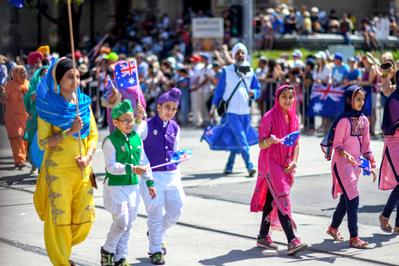
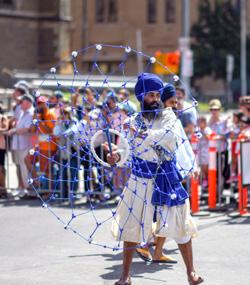
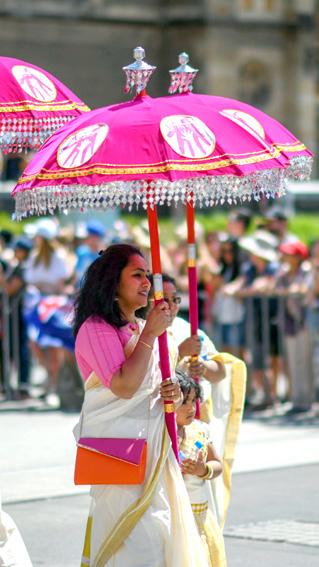

SENTHILL SUNDARAM follows the Indian participation
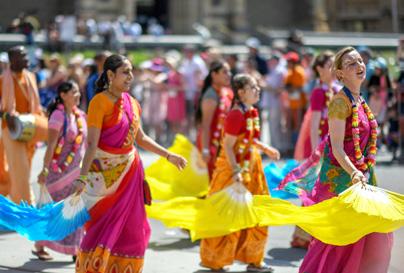

16 FEBRUARY 2019 www.indianlink.com.au COMMUNITY
Regarlanding THE BODY
BY APARNA ANANTHUNI

asmine. it might simply be a pretty flower in the Western gaze, but in South Asian cultures, especially in South India, the jasmine is replete with connotations of youth, sensuality, sexual awakening, and delicate femininity.
Just as the jasmine expresses a multilayered meaning, so does the Indic dancing body. And in their new show ‘Third Nature’, Raina Peterson and Govind Pillai (In Plain Sanskrit, Bent Bollywood) meld these two in a joyous, sensuous, and vulnerable celebration of the non-binary, ungendered, uncolonised body.

Instead of examining deloconisation, this show - in an entrancing departure from other contemporary South Asian dance work - celebrates a state in which the body is utterly free, a time before we as people of colour, as colonised people, and people of varied and fluid gender identities, were bound and corseted into hard notions of dual gender, cautious sexuality, Eurocentric ‘propriety’, and Victorian guilt. Using their respective dance vocabularies of Mohiniyattam, and a seamlessly blended soundtrack of popular and traditional Indian music, and, most of all, sprawling, abundant garlands of jasmine hung from the stage ceiling and piled on the stage itself, Peterson and Pillai create a world of enchantment, fantasy, and above all, unfettered, joyous pleasure.

Bare-chested, clad in only simple white shorts, the pair explore the possibilities that the jasmine – as much a third performer in this show as a beautiful, fantastical prop –offers them, separately and together. Pillai’s hand reaches through the jasmine, shaping


itself into dance ‘mudras’, beckoning to Peterson. Peterson’s character entices Pillai’s into enjoying the touch of jasmine on the body. And at the piece’s peak, the pair began to tear down the jasmine garlands, laughing, kissing, throwing them at one another, winding them around each other’s bodies, tussling with one another through riotous piles of flowers, in a game of pure sexual liberation and joy. This part of the show struck me not just for the raucous, melodic celebration of identity and self, but as an evocation of the ‘divine pleasure’ that Indic dance often celebrates. The destructive workings of colonialism and nationalism meant that today in Indic dance and music, transportative bodily pleasure is almost exclusively reserved for the portrayal of gods and goddesses. After all, jasmine is also a flower that is used to decorate – in fact often envelop - divine bronze bodies in temples or private shrines. But Peterson and Pillai re-inscribe divine pleasure onto their own human bodies, and in doing so they free them, and us, from the falsehood that to be human is to be limited.
The other highlight, for me, was the solo, improvised, expressive section Peterson performed, after the jasmine revels ended in sudden fall and depression. Evoking the withering of the flower with hands and face, they harnessed the deeper potential of the Indic dance body and its emotional expression (called ‘abhinaya’ or ‘bhav’). This particular kind of expression has a unique power – it allows the dancer to tell multiple, fleeting, intense stories at once, through the play of expression, the pathos of the hands.
Peterson’s character is saved from their melancholy by Pillai’s, who, rising from their sleep/depression, reaches out across the drifts of jasmine to them.
There is hope. Our abundance is not lost. We have no limits. And we can give ourselves permission to play.
FEBRUARY 2019 17 STAGE
When strings of jasmine celebrate not only identity but also the ungendered body
Raina Peterson and Govind Pillai re-inscribe divine pleasure onto their own human bodies, and in doing so they free them, and us, from the falsehood that to be human is to be limited.
I’m a now
AYUSHMAN JASWAL
Kew East Primary School, Kew East VIC “I wanted mum to stay with me for some time, then I felt happy!”
ATHARV SINGH
Kororoit Creek Primary School, Caroline Springs VIC
"I love it here Mumma, I don’t want to go home"
ATHARVA TEMURNIKAR
Murrumbeena Primary School, Carnegie/ Murrumbeena VIC
“Yes I am excited to go to school.”
AYAAN BAKSHI


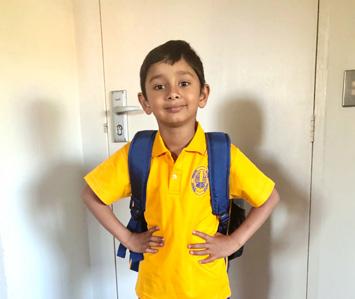

Huntington Tower School, Mount Waverley
“I like my uniform. There were lots of


SHANAYA SARDANA
St. Joseph’s Primary School,
AARYAN POULOS
Lady of the Rosary School, Kensington NSW
“I’m going to my sister Kristelle’s school.”
PRIYAL TONGIA
School, Parramatta NSW

Sings a song from Playgroup: "Look at me, I am going to school soon!"



MEHER CHAWLA
Gilson College, Taylors Hill VIC “I like my school clothes and my lunchbox.”

SARADHA ASHOKKUMAR
Whitefriars Primary School, Woodville Park SA
“There are two play kitchens in my classroom.”
18 FEBRUARY 2019 www.indianlink.com.au KINDY KIDS
ANAHAT MARHALA
North Balwyn Primary School, Balwyn North VIC “My veerji (brother) is in the same school.”

HRIDHAAN PRATAP
Harvest Home Primary School, Epping VIC “I’ll see my brother at break time”

SHIVAM GADANI
Vermont Primary School, Vermont VIC “I’m going to be a leader like my brother.”
HELI BHATT
Harrisdale Primary School, Harrisdale WA “Mummy picks me up and my
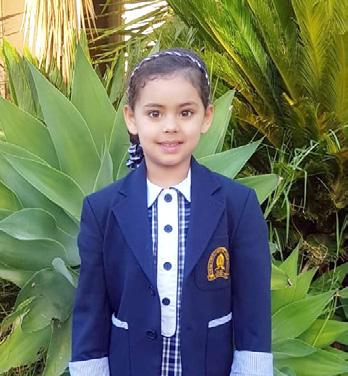


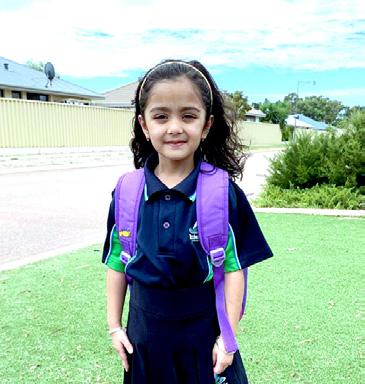
AARYA DALWADI
The Pines Primary School, Parafield Gardens SA “I have my own desk with drawer.”
Sanctuary Lakes VIC “I helped my mum pack my lunch box.”
NAVNEET KAUR
Parklea Public School, Glenwood NSW “I love Parklea Public School.”
PRABHNOOR SINGH
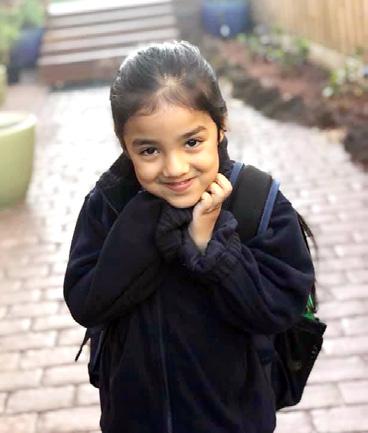
Parklea Public School, Glenwood NSW “I like playing on the swing.”
PESAL CHIDANAND
Lucas Heights Community School, Barden Ridge NSW “I’m a big boy like my brother.”


FEBRUARY 2019 19
Westbourne Grammar,
WHAT’S ON
EXHIBITION
Visions of Paradise
Till Apr 26 (10.00am – 5.00pm)
The exhibition features a selection of works from a major 1980 Felton Bequest acquisition of over 270 paintings that document the princely lifestyles of the Rajput courts of Bikaner, Marwar (Jodhpur), Jaipur, Kotar and Mewar (Udaipur). At NGV International, 180 St Kilda Road. Details www.ngv.vic.gov.au.
A Kantha Garden for Her
Thu 7 February to Sat 2 March, Tuesday to Friday, 11am–5pm and Saturday, 11am–3pm. Artist Natasha Narain presents paintings that address the Kantha textile tradition of India, an intergenerational form of story-telling. The Kantha textile tradition saw a personal and intergenerational, women-centred practice with narratives embroidered on worn, at times stained and frail muslin sarees. Venue: Walker Street Gallery and Arts Centre, Corner of Walker and Robinson streets, Dandenong. Details 03 9706 8441.
ENTERTAIMENT
Movie under the stars:
Bend It Like Beckham
Sat 23 Feb (6:30 pm – 10:30 pm)
Foodie Trails presents outdoor movie festival. Enjoy a relaxing night out, grab a meal from the food trucks and watch your movie under the stars after sunset. Details www. foodietrails.com.au
STAGE
Stand-up comedy:
Alex in Wonderland
24 Feb (5.30pm) Evam and Natya
Entertainment present Alexander Babu's hilarious stand-up comedy solo show.

Venue: The Cabaret Room
Shoppingtown Hotel, 13/21 Williamsons Rd, Doncaster. Details
LINK RADIO
www.ticketebo.com.au
UNIVERSITY
Australia India Institute’s Drop in Chai
First Friday of every month (2.00pm to 3.00pm)
Come chat to other South Asia enthusiasts over samosa and chai and catch up on what different people are doing in relation to India (feel free to bring announcements or new publications!).The chai and conversation is free and open to students, staff, faculty, and members of the public at Upstairs Seminar Room, Australia India Institute 147-149 Barry St, Carlton. Details 03 9035 8047 or visit www. aii.unimelb.edu.au
Strategies for translation in health science & technology: Australia/India
Fri 15 Feb (10:00 am-11:00 am)
Presented by Prof.Gagandeep Kang, Director of Translational Health Science and Technology Institute, Department of Biotechnology, Government of India. Venue: Arole Room, Nossal Institute for Global Health, Level 5, 333 Exhibition St, Melbourne. Details www.aii.unimelb. edu.au
COMMUNITY
Indian Professionals in Victoria (IPV)

A not-for-profit, membership-based and member-owned association that aims to train and support Indian professionals and entrepreneurs through workshops, seminars, webinars and mentoring programs. Membership details www.ipv.org.au
Indian Community Mental Health Support Group
For families and carers both who are experiencing mental health concerns. Every First Friday of the month. From 2.00pm-4.30pm. At Yarra Plenty Reginal Library (Mill Park Library),
394 Plenty Rd, Mill Park. Details Carer helpline 1300 554 660 or email carers@mindaustralia. org.au
Indian Young Women’s Group Fridays 12.30pm-2.30pm
The Indian Young Women’s Group is organised free by Wyndham Community and Education Centre (Wyndham CEC) every Friday afternoon at the Wyndham Park Primary School, Community Hub Room, Kookaburra Avenue, Werribee. Contact the Wyndham Community and Education Centre, 3 Princes Highway Werribee, wyndhamcec.org. au or call 03 9742 4013
Let’s Feed
A volunteer-driven campaign and fundraising group working to organise activities, source food and deliver it to different agencies and also assist family violence victims with food related needs. Let’s Feed fills food-related gaps in existing services using micro donations. Let’s Feed collects non-perishable food from local groups at temples, participating grocery stores and delivers to Youth Resource Centre, Asylum Seekers Resource Centre and other agencies. Visit: letsfeed. org or email: jasvinder.sidhu@ letsfeed.org
LANGUAGE
Gurukul Hindi Classes Saturdays
11.00am-12.00 noon
Connections@Craigieburn, 59 Craigieburn Road, Craigieburn VIC 3064. These weekly classes are taught by Manisha Garg and Bhupinder Kahlon. Contact Narinder Garg 0431 123 045 or infothegurukul@gmail.com
Let’s Talk: Conversational English Saturdays 10.00am-11.30am
Practice and develop your English speaking skills in a relaxed small group that has a warm and friendly atmosphere. Meet every Saturday
at Werribee Church of Christ, 200 Tarneit Road, Werribee. This is for people who want to gain confidence and practice their English. All are welcome to attend, morning tea is provided and it’s free. Contact 03 9741 6051 or visit werribeechurchofchrist.org
Pronunciation Workshop 1st Sunday of the month
12.00 noon – 3.00pm
Are you learning English as a second language and are interested in working on your pronunciation? Join Kaled – a friendly ESL (English as a Second Language) expert who will help you work on your English language skills for free at the Library at The Dock, Activities Room, 107 Victoria Harbour Promenade, Docklands.
MISC
Haadu Baa Kogile
Melbourne’s first ever Kannada musical event held every last Saturday of the month. All welcome. Organised by Ankura Music School.
Details 0432 192 424
The Indian Music Collective
Melbourne
The Indian Music Collective Melbourne provides space for practice/jamming in a friendly environment for musicians to meet and practice. Anyone who plays a Hindustani classical music instrument or can sing Hindustani classical music at any ability/level is welcome at St John’s Catholic Primary School, 77 Queens Parade, Clifton Hill. Listeners are also welcome. Gold coin to contribute towards tea/coffee/snack costs. Contact HarjinderBhogal at oldmanindia@gmail.com
To add your event email media@indianlink.com.au

20 FEBRUARY 2019 www.indianlink.com.au
K A SHI F S AT U R D AY S 9 A M - 1 p m INDIAN
WEEKENDS ANUP SAT 1-4 pm SUN 5-8 pm SAGAR SUNDAYS 9 AM - noon DOWNLOAD APP VIa ITUNES & GOOGLE PLAY
Why the Indian Ocean region might soon play a lead role in world affairs
BY CRAIG JEFFREY
In recent days, Australia’s foreign minister Marise Payne announced efforts to strengthen Australia’s involvement in the Indian Ocean region, and the importance of working with India in defence and other activities. Speaking at the Raisina Dialogue in Delhi - a geopolitical conference co-hosted by the Indian government - Payne said: “Our respective futures are intertwined and heavily dependent on how well we cooperate on the challenges and opportunities in the Indian Ocean in the decades ahead.”
Among Payne’s announcements was A$25 million for a four-year infrastructure program in South Asia (the South Asia Regional Infrastructure Connectivity initiative, or SARIC), which will primarily focus on the transport and energy sectors.
She also pointed to increasing defence activities in the Indian Ocean, noting that in 2014, Australia and India had conducted 11 defence activities together, with the figure reaching 38 in 2018.
Payne’s speech highlights the emergent power of the Indian Ocean region in world affairs. The region comprises the ocean itself and the countries that border it. These include Australia, India, Indonesia, Bangladesh, Madagascar, Somalia, Tanzania, South Africa, the United Arab Emirates and Yemen.
In terms of global political significance, the Atlantic Ocean can be viewed as the ocean of our grandparents and parents; the Pacific Ocean as the ocean of us and our children; and the Indian Ocean as the ocean of our children and grandchildren.
There is an obvious sense in which the region is the future. The average age of people in the region’s countries is under 30, compared to 38 in the US and 46 in Japan. The countries bordering the Indian Ocean are home to 2.5 billion people, which is onethird of the world’s population.
But there is also a strong economic and political logic to spotlighting the Indian Ocean as a key emerging region in world affairs and strategic priority for Australia.
Some 80% of the world’s maritime oil trade flows through three narrow passages of water, known as choke points, in the Indian Ocean. This includes the Strait of Hormuz - located between the Persian Gulf and the Gulf of Oman - which provides the only sea passage from the Persian Gulf to the open ocean.
The economies of many Indian Ocean countries are expanding rapidly as investors seek new opportunities. Bangladesh, India,
Malaysia and Tanzania witnessed economic growth in excess of 5% in 2017 - well above the global average of 3.2%.
India is the fastest growing major economy in the world. With a population expected to become the world’s largest in the coming decades, it is also the one with the most potential.
Politically, the Indian Ocean is becoming a pivotal zone of strategic competition. China is investing hundreds of billions of dollars in infrastructure projects across the region as part of its One Belt One Road initiative.
For instance, China gave Kenya a US$3.2 billion loan to construct a 470 kilometre railway (Kenya’s biggest infrastructure project in over 50 years) linking the capital Nairobi to the Indian Ocean port city of Mombasa.
Chinese state-backed firms are also investing in infrastructure and ports in Sri Lanka, the Maldives, and Bangladesh. Western powers, including Australia and the United States, have sought to counterbalance China’s growing influence across the region by launching their own infrastructure funds - such as the US$113 million US fund announced last August for digital economy, energy, and infrastructure projects.
In security terms, piracy, unregulated migration, and the continued presence of extremist groups in Somalia, Bangladesh and parts of Indonesia pose significant threats to Indian Ocean countries.
Countries in the region need to collaborate to build economic strength and address geopolitical risks, and there is a logical leadership role for India, being the largest player in the region.
Prime Minister Narendra Modi told the Shangri La Dialogue in June, 2008: “The Indo-Pacific is a natural region. It is also home to a vast array of global opportunities and challenges. I am increasingly convinced with each passing day that the destinies of those of us who live in the region are linked.”
More than previous Indian Prime Ministers, Modi has travelled up and down the east coast of Africa to promote cooperation and strengthen trade and investment ties, and he has articulated strong visions of India-Africa cooperative interest.
Broader groups are also emerging. In 1997, nations bordering the Bay of Bengal established the Bay of Bengal Initiative for Multisectoral Technical and Economic Cooperation (BIMSTEC), which works to promote trade links and is currently negotiating a free trade agreement. Australia, along with 21 other border states, is a member of the Indian Ocean Rim Association (IORA) which seeks to promote sustainable economic growth, trade liberalisation and security.
But, notwithstanding India’s energy and this organisational growth, Indian Ocean
cooperation is weak relative to Atlantic and Pacific initiatives.
Australia’s 2017 Foreign Policy White Paper seeks to support IORA in areas such as maritime security and international law. Private organisations, such as the Minderoo Foundation, are doing impressive research - as part of the Flourishing Oceans initiative - on the migration of sea life in an effort to advance environmental sustainability and conservation.
But Australia could focus more on how to promote the Indian Ocean. In Australia’s foreign affairs circles, there used to be a sense Asia stopped at Malta. But it seems the current general understanding of the “IndoPacific” extends west only as far as India.
What this misses - apart from the historical relevance and contemporary economic and political significance of the Indian Ocean region generously defined - is the importance of the ocean itself.

Not just important for trade and ties
If the Ocean was a rainforest, and widely acknowledged as a repository of enormous
biodiversity, imagine the uproar at its current contamination and the clamour around collaborating across all countries bordering the ocean to protect it.
The reefs, mangroves, and marine species that live in the Ocean are under imminent threat. According to some estimates, the Indian Ocean is warming three times faster than the Pacific Ocean.
Overfishing, coastal degradation and pollution are also harming the ocean. This could have catastrophic implications for the tens of millions of fishermen dependent on the region’s marine resources and the enormous population who rely on the Indian Ocean for their protein.
Australia must continue to strengthen its ties in the region - such as with India and Indonesia - and also build new connections, particularly in Africa.
Craig Jeffrey is Director and CEO of the Australia India Institute at the University of Melbourne
This article is republished from The Conversation (theconversation.com/au)

FEBRUARY 2019 21
OPINION
In terms of global political significance, the Atlantic Ocean can be viewed as the ocean of our grandparents and parents; the Pacific Ocean as the ocean of us and our children; and the Indian Ocean as the ocean of our children and grandchildren.
Geopolitical concerns arising from the economy and from maritime security, as well as ecological issues, will spotlight the region
The Indian Ocean touches 28 countries, a third of the world’s population, aggregating an expected 22% of world GDP by 2025 and 16% of global trade
Experiencing the NEW INDIA
Being of Indian descent, I grew up in the UK with India often having a poor reputation – it was known to be a backward and dirty country, corruption was rife, ancient traditions were believed to be based on superstition and lacked relevance. Indians would often ridicule India themselves and unwittingly make the association with this great country highly undesirable and embarrassing.
Fast forward to 2019 - we enter the New India.
As part of the Indian government’s outreach to the Indian diaspora, I was invited in 2017 by Smt Sushma Swaraj (Minister for External Affairs) to discuss how the ‘New India’ can connect with the young Indian diaspora. This was followed by a panellist invitation to the three-day Pravasi Bharatiya Divas (PBD) conference in Varanasi in January 2019. I was assigned, with fellow panellists from other countries, the task to discuss how to engage the young Indian diaspora with ‘New India’. At the inauguration of the Conference, Prime Minister Modi explained the important role that we, the Indian diaspora, play in the ‘New India’. He referred repeatedly to this ‘New India’ which at the time I did not fully understand but by the end of the conference it became clear. Individuals of different ‘Indian migrant generations’ have different needs and characteristics: first generation Indian migrants are in pursuit of economic prosperity and stability (they may concentrate less on cultural activities); those of the 2nd-4th generation (such as myself) have been raised in economic, political and social stability - we would be curious about cultural and identity-linked aspects of India (if presented objectively and without personal opinions) in order to answer our inner identity questions.
It was an honour to have lunch with Prime Minister Modi, Uttar Pradesh Chief Minister Yogi Adityanath and dinner with Smt Sushma Swaraj. These events allowed key
Indian diaspora, leaders in their respective countries amongst the Indian community, to meet and network in a cordial and brotherly environment. Fruitful discussions occurred during the conference regarding further collaborative Australia-India platforms.
Varanasi as a city is now incredibly clean. People are friendly and ever-ready to help their

pravasi brothers and sisters. The sacredness of this city with its ancient Hindu temples was palpable, and a lot of information was presented to explain the scientific basis toour ancient customs and traditions.
The three-day conference was followed by a coach trip to the Kumbh Mela in Prayagraj - 3000 overseas delegates in 90 coaches transported safely from Varanasi to Prayagraj to participate in a snaan (sacred bath). We were all dumbfounded by the sheer size and level of luxury provided in the artificially-made Pravasi tent villages in Prayagraj: such facilities would be difficult to find in our home countries. The snaan at ‘triveni sangam’ is a privilege few of us obtain in a lifetime. There was no rush or crowdedness as one would expect with the Kumbh; we moved around with ease and freedom, constantly escorted by the police force and government officials. The level of organisation and professionalism demonstrated by both the Indian and the UP governments was truly admirable and that of a forward India, not a backward one.
Following this, it was a train journey back
to Delhi, in a dedicated Pravasi Express train. Our final event was the Republic Day Parade in Delhi on 26 Jan - a proud moment for us all, including myself, who has never lived in India. Understanding the soldiers’ sacrifices for the great land we call India is an honour. Witnessing the modernised capacity of the armed forces (Infantry, Air Force) was a reminder that this ‘New India’ has been ushered in. I can say with great confidence that the engagement and connection of the Indian diaspora to the New India was achieved.
It is time the Indian diaspora woke up to the reality of this ‘New India’ and not dwell in our past experiences of the old India. Connecting with this contemporary India will allow better engagement with the youth and prevent the ridicule which Indian diaspora like myself have had to suffer.

On a personal level, I gained some inner peace regarding my identity and connection to what is now called the ‘New India’ - a contemporary country of force, the fastestgrowing global economy, a country whose international reputation is now amongst the leading nations, having a truly rich history with scientific-based ancient culture and traditions.
I no longer need to be apologetic about who I am and the land from which I originate.
Dr Anil Kumar Asthana is a Gastroenterologist and Hepatologist who has lived in Melbourne for 11 years
22 FEBRUARY 2019 www.indianlink.com.au FIRST PERSON
The Pravasi Bharatiya Conference gave Dr ANIL KUMAR ASTHANA a new perspective to the land of his cultural heritage
We were dumbfounded by the sheer size and level of luxury provided in the artificially-made Pravasi tent villages in Prayagraj: such facilities would be difficult to find in our home countries.
Indian community members joined local politicians and aged care providers recently at the launch of Planning Permits for an ethno specific, Indian aged care facility in Melbourne.

The Australian Federal Government has approved a $1 million dollar grant towards the 108-bed facility in the south-eastern suburb of Noble Park.
According to Petra Neelman Executive Director of MiCare (Formerly Dutch Care), the facility will ensure availability and access to linguistic and cultural needs, social activities and food choices for the residents.
The plans include four prayer rooms, a vegetarian kitchen and a 300-seat capacity community hall among other culturally sensitive features.
Years of persistence in attempts to provision aged care services from an ethno specific Indian perspective finally saw some promising development with this launch.
As all the dignitaries that attended the event pointed out, the credit for this exciting development goes to community leader and Multicultural Ambassador Vasan Srinivasan, who worked persistently to bring the plans to fruition.
Alan Tudge MP, Minister for Cities, Urban Infrastructure and Population, commended Vasan for his persistence in spearheading projects that included the development of the Museum India in Dandenong, where the aged care facility launch was held.
‘Energiser Bunny’ and ‘Organiser Extraordinaire’ were the terms used to describe Vasan as the Minister acknowledged his hard work in negotiating with both the Federal and State Governments in relation to the proposed facility.
According to the Minister, ethno specific services provide enhanced connectedness and mental wellbeing for older people from diverse backgrounds. He thanked everyone involved for getting this up and running and officially declared the planning approvals as completed.
Roz Blades, Mayor, City of Dandenong,
FINALLY, ETHNOSPECIFIC AGED CARE
joined the Minister in launching the plans along with Neil Angus, Shadow Minister for Citizenship and Multicultural Affairs and Matt Fregon, Member for Mount Waverley.
Despite the melting heat, the event was well attended by multicultural leaders, community representatives and local media. MC Aneka and Swati admirably kept their cool through the entire event as they invited the dignitaries to say a few words.
Rakesh Malhotra (Consul General of India in Melbourne), Dr Dinesh Parekh (Artistic Director of Museum India) and Dr Sharad
Gupta (President of FIAV) also addressed the audience briefly. A traditional Indian wrap and flowers were presented to all the dignitaries.
A light vegetarian meal was served after the event.
Speaking to the guests post event, Vasan Srinivasan shared his experience of the challenges that were faced and the multiple attempts made before reaching this stage of approval.
He is optimistic that the combination of MiCare’s experience of working with ethnic backgrounds, Federal and State Government
funding and community support will ensure the realisation of this project.
“As the population of Indians in Melbourne continues to grow it is imperative that the community has access to ethno specific aged care in order to age and live well,” said Vasan.
According to him, availability of an ethno-specific and multicultural aged care, bilingual workforce and health educators will play a pivotal role in promoting healthy ageing and community capacity building.
Preeti Jabbal
Long standing service to community
His morning starts with picking bread from bakeries and delivering it to the needy.
The rest of his day is a blur of activities including signing documents in the capacity of Justice of Peace, raising funds, brainstorming the next fundraising activity, or attending interfaith meetings and events.
If he is not helping clean the reserve next door by getting rid of the plastic and bottles, he is busy donating blood for the 148th time,or guiding youngsters to plant trees. Amidst all this, he still finds time to spend with his beloved grandchildren.
At 70 plus years of age, the energy that keeps Indian community leader Shashi Kochhar going, is inspirational.
Recipient of Sir John Monash Multicultural Champion 2018 award, Kochhar believes in the ‘PDCA’ approach adopted from his previous experience in textile industry quality control. The process of ‘Plan, Do, Check and Act’ has held him in good stead both professionally and personally.
“I came to Australia in 1971 to study,
and in 1978 to settle,” Kochhar told Indian Link. “Prior to my departure my parents and elders offered me some good
advice that I have always adhered to. They told me one cannot cross a river in two boats - you have to decide which one you wish to take on your journey.”
The positive message of being solutionfocused, reflective, respectful of people, the law and place, and deciding on the boat on which to travel in life, has always guided Kochhar’s path.
“I am a product of cultural values from India; however, I am equally proud to be Australian. I am like a tree that had its roots in India, however, was nurtured, watered and provided nourishment to grow in Australia,” said Kochhar sharing his story.
He believes that for communities to prosper and sustain, young people should be valued, engaged and supported.
As the founder of Friends Of Children Foundation that was established in 1998, Kochhar has helped raise millions of dollars for Monash Children Hospital and the Royal Children’s Hospital in Melbourne. The not-for-profit foundation’s primary focus remains on raising funds and working with organisations that are
involved in providing better health and education for the citizens of tomorrow.
Kochhar volunteers for the bread brigade that picks up breads from donating bakeries and distributes them to aged care centres, asylum centres and shelters for the underprivileged. He also chairs the Monash Interfaith gathering, a group that seeks to build bridges between people of all faiths and beliefs within the community of Monash.
For his good stature within the community, he was appointed as a Justice of Peace. He is also a fellow of the Royal Victorian Association of Honorary Justices.
“As a JP I must have signed over 30,000 documents for people till date,” said Kochhar proudly.
His tireless efforts across multiple areas have been recognised with multiple community awards over the years.

Showing extraordinary commitment and passion for voluntary work, Kochhar wishes to continue building and supporting stronger, healthier and more connected communities in Melbourne.
Preeti Jabbal
FEBRUARY 2019 23
COMMUNITY
Quiet please!





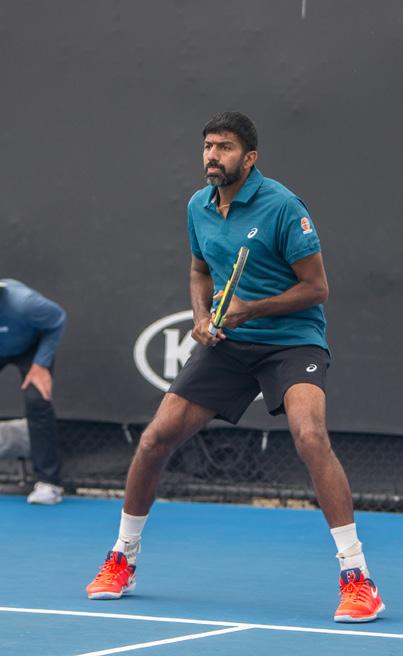

24 FEBRUARY 2019 www.indianlink.com.au AUS OPEN TENNIS
J Nedunchezhiyan (Ind) & N Monroe (USA)
Tennis Hot Shot Mia Kappadath with her family
RAVINDER SINGH JABBAL captures some Indian links at Australian Open 2019






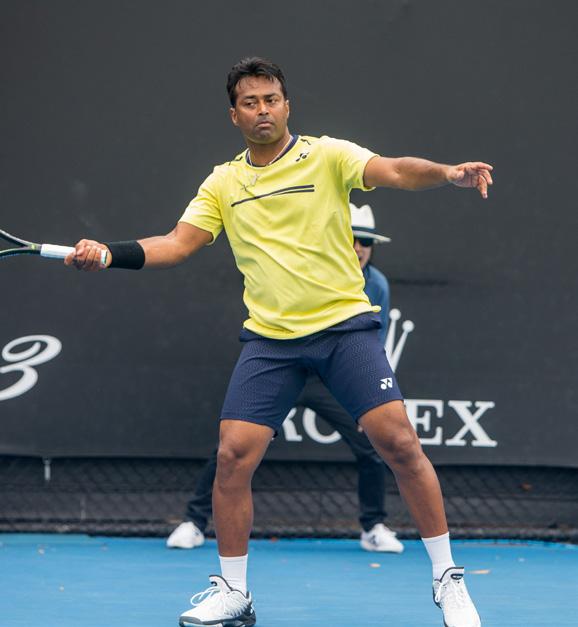
FEBRUARY 2019 25
Top row: FROM LEFT Rohan Bopanna (Ind), Divij Sharan (Ind) , Leander Paes (Ind), Naiktha Bains (Aus)
Aisam Ul Haq Qureshi (Pak)
Five lesser known gems in Thailand

Go off the beaten track and check out ancient temples and unusual markets
Phra Si Sanpet, Wat Yai Chaya Mongkol and Wat Phra Mongkhon Bophit demonstrate the architectural ingenuity of the time.
BY SANDIP HOR

When Thailand is talked about in the tourist circle, popular destinations like capital Bangkok, Chiang Mai, Chiang Rai, Phuket, Pattaya, Ko Samui and Krabi dominate the conversation. There are however, other striking places in this Asian nation that are unfortunately less known but are no less attractive. Five such are detailed below.

Ayutthaya Around ninety minutes by road from Bangkok, Ayutthaya was one of the greatest cities in Asia during the medieval period. It was founded in 1350 and remained capital of Siam kingdom for over 400 years. With a myriad of palaces, monasteries, Buddhist temples and chedis adorning the landscape, it was then regarded as one of the most beautiful cities in the world. Unfortunately, a devastating war with neighbouring Burma in 1767 reduced the city to ruins, which still exist to evoke the splendour of the past. Local Thai people and some outsiders still haunt this wrecked arena for a connection with the kingdom’s hallowed past. Once home to over 400 temples, palaces, stupas and noble houses, only a few so far has been partially restored. While still in ruins, the leftovers of the Grand Palace show the might of the kingdom; Wat Mahatat housed Buddha’s relics, and Wat
Phrae Tucked into Thailand’s remote north-eastern corner, this riverside walled town was built in the 12th century and well known for beautiful teak mansions, temples and unhurried lifestyle. Influences from neighbouring Laos and Burma are evident in architecture, art, culture and cuisine. There are some twenty temples in the domain, of which Laos style Wat Luang - said to be around 1000 years old - is the first-born and the best. This octagonal stupa is notable for its elephant caryatids. The more recently built Wat Chom Sawan is a teak architectural wonder built in traditional Burmese style. Another very impressive temple is the Wat Phong Sunan, dominated by a gleaming white chedi consisting of 108 spires.
Nan Only 130km north-east from Phrae, Nan is steeped with history since the 13th century when it came under the influence of the Sukothai and Lanna kingdoms. Later in 1558, it surrendered to Burma, and subsequently became a vassal state under Bangkok in 1788. Finally in 1931, it got annexed to the kingdom of Thailand. Surely an off-the-radar of most travellers, but many find this quaint place a gem to relax in the middle of nature while appreciating the traces of the past in local art, culture, cuisine, handicrafts and temple architecture. A must visit is the 1569 Wat Phumin, featuring central golden Buddha faces in
four directions and vivid murals that depict scenes from the lives of the Buddha. Another temple Wat Phra That Chae Haeng is also visit-worthy.

Kanchanaburi Located 130km away from Bangkok, Kanchanaburi is home to the infamous ‘Death Railway’ built over a bridge over the Khwae Yai River during WWII, deploying 60,000 Allied Forces prisoners and several locals, most of who died from the hard labour. A museum and cemetery in the quirky town provide a moving testament to the brutal episode, immortalised by the Hollywood movie Bridge on the River Kwai. The surrounding region is a nature lover’s paradise. The magnificent landscape is dotted with pristine national parks, tranquil rivers and charming waterfalls that offer excellent opportunities for fishing, rafting, canoeing, mountain biking, bird-watching, star-gazing, golfing, elephant and jungle trekking, complementing the lures from history and culture.
Maeklong Railway Market Markets in Thailand more or less have similar appearance and character. But one that definitely stands out is the Maeklong Railway Market, located 80km south of Bangkok. It’s claimed to be the only market in the world, where a train runs through the middle of it, several times a day. An amazing spectacle to see how swiftly vendors bring down shop awnings and move merchandise upon hearing the horn, giving way to the passing train with less than a foot to spare.
TRAVEL TIPS
Getting there Fly Thai Airways (www.thaiairways.com) from Australia to Bangkok. Nok Air (www.nokair.com) flies to both Phrae and Nan from Bangkok's Don Mueang Airport. Ayutthaya and Kanchanaburi are roadtrips from Bangkok and Maeklong is on the way to Kanchanaburi
Stay Rembrandt Hotel (rembrandtbkk.com) in Bangkok, Huern Na Na Boutique Hotel (www.huernnana.com) in Phrae and Wiang Kaew Hotel in Nan.
Ground assistance
Absolute Fantastic Holidays (www. absolutelyfantasticholidays. com)
26 FEBRUARY 2019 www.indianlink.com.au TRAVEL






FEBRUARY 2019 27
Clockwise from top left: Wat Phong Sunan in Phrae; the Death Railway in scenic Kanchanaburi; a restored temple in Ayutthya; a daily ritual in Nan; Maeklong Railway Market; in Nan; the bridge on River Kwai
Lunch box treats
Looking for healthy snacks that appeal taste-wise? Try these treats by GAURAV MASAND for a nutritious lunch box
HUMMUS
Hummus is a silky smooth versatile dip which is both vegan and gluten-free. You can be pair it with pita bread, carrot and celery sticks or just whole wheat bread rolls.

Ingredients
1 can chickpeas / 2 cup boiled chickpeas
2 cloves garlic, grilled
1 red capsicum, grilled
1/4 cup extra virgin olive oil
2 tbsp sesame powder (avoid in case of nut allergies)
2-3 tbsp lemon juice
Salt to taste
Method
Mix all ingredients in a food processor until smooth. Add some more olive oil/lemon juice if required. Sieve to get a smooth texture.
Store in a dry jar in the refrigerator.
Pack in lunch box with cherry tomatoes, carrot, celery sticks, nacho chips or pita bread.
BUTTER COOKIES
This is a very simple recipe that is made with a mix of five different flours.
Ingredients
200 gm unsalted butter at room temperature
1/2 cup castor sugar
1/2 cup + 2tbsp wholewheat flour
1/2 cup + 2tbsp plain flour
1/2 cup + 2tbsp oats powder
1/2 cup + 2tbsp rice flour
1/2 cup + 2tbsp flax seeds
Method
Grind the flax seeds and keep aside. Dry roast the oats in a pan for 10 minutes, grind to a fine powder and keep aside. Beat butter in an electric mixer with castor sugar until it turns pale and creamy. Mix all remaining ingredients and until it comes together as a dough. Wrap the cookie dough in a cling film and refrigerate for 30 mins. When the dough is cold, roll it out on a floured surface to about 1cm thick. Using a round cookie cutter cut as many rounds as you can from the dough and line them onto a baking tray lined with baking paper.
Bake for 18 to 20 minutes in a pre-heated oven at 160 C, or until the edges start to turn golden brown.
CHOC-CHIP COOKIES
These are melt-in-the-mouth biscuits which make the world go mmmmm! Why feed the kids store-bought cookies when you can bake these easily at home?
Baking cookies at home ensures you have a healthier variety as you know what goes into it all.


Ingredients
150-gm soft unsalted butter at room temperature
2/3 cup brown sugar
1 cup rolled oats
1 cup plain flour
½ cup flax seeds
1 1/4 cup water
1 tsp vanilla extract
1 tsp baking powder
1 cup chocolate chips
Method
Grind the flax seeds and add to 1 1/4 cup of water. Keep aside.
Dry roast the oats in a pan for 10 minutes and grind to a fine powder. Keep aside
Beat the butter with sugar in a stand mixer or hand mixer until pale.
Slowly add all the ingredients except the chocolate chips.
Once mixed, introduce the chocolate chips.
Scoop 2 tbsp of mix in a baking tray or cookie tray, 3 cm apart. Press down slightly. Decorate with extra choc bits
In a pre-heated oven, bake for 25-30 mins at 160 C. Allow to rest for 10 minutes, then store in an air tight container.
28 FEBRUARY 2019 www.indianlink.com.au FOOD 30 JANUARY (2) 2019 www.indianlink.com.au FOOD
February 2019 BY MINAL
KHONA
Minal Khona has been reading tarot cards for the last two decades. She uses her intuition and connect with the cards mostly to help people.

ARIES
March 21 - April 19
Strong bonds, concerns regarding worldly matters and some negative conditions might take up space in your head this month. Things might seem like they are going wrong on all fronts and it is not the time to push for results. You might feel like you are overworked, underpaid and under-appreciated. If recently separated from a significant other, attempts to reconcile will not succeed. But a marriage going through a rough patch will not break and singles could get hitched too.
LEO July 21 - Aug 22



The unexpected dominates this month, and a successful business or financial transaction will leave you pleasantly surprised. Travel for work or personal reasons is successful. Business is in flourish mode and practical help will be offered. An excellent time to say yes to that persistent suitor if you’re single. The health of a family member concerns you, but you need to rest it out. Listen to your heart in moments of doubt and luck is on your side.
SAGITTARIUS
Nov 22 - Dec 21
TAROT
TAURUS
April 20 - May 20
Tarot indicates the presence of a person with a Virgo kind of temperament. Or, Taureans might find themselves being extra finicky in their work. You might consider a new line of work. A relationship coming apart is likely to end; going with the flow will make it easier on you. Some unhappy or upsetting news from the family is predicted. Relinquish your ego and let the universe do its thing. Trust in the divine plan and do the right thing.
VIRGO
Aug 23 - Sep 22
A busy month for Virgos with a lot of comings and goings, get togethers, short trips and what not. A happy time as you will be much sought after personally and professionally this month. A new job or project will give your spirits a much needed boost to lift them out of the mundane. Yet, the busy time can make you tired or irritable, so make sure you get enough rest. Self-employed people could make more money than they anticipated.





CAPRICORN

Dec 22 - Jan 19
Any decision Sagittarians make this month should be taken after weighing pros and cons. New relationships, business ventures and improved conditions are round the corner. A short trip will prove beneficial. Change in consciousness through spiritual evolvement and selfimprovement will add meaning and depth to your work. Someone you care for deeply could have a heart attack or you will have health problems due to stress. Accept what is coming your way from the universe; it could change your life.
If things have not been going well lately, it is time to confront some hard facts about yourself and come to terms with your situation. Travel brings good luck and positive changes. You might quit or lose your job. Family needs attention as not every situation is hunky dory. Money problems will come to an end though it might not seem like it right now. Don’t give up on yourself or loved ones and move away from selfdestructive patterns.
GEMINI
May 21 - June 20
A period of action, movement and perhaps even struggle that includes some anxious moments, is foretold for Geminis this month. A new relationship could be in the offing. If married, the relationship could be on the rocks but a new approach could stabilise matters. Stress and tension add to your woes but you will take remedial measures to not let it affect your health. Have faith though, and tensions will ease off, and you will experience improved conditions all around.
LIBRA

Sep 23 - Oct 22
You will want to devote time and attention to interpersonal relationships, short or long trips and a quest for enlightenment. Unpleasant scenarios at home leave you feeling victimised. A marriage or romantic relationship too could see friction this month. Try and control your temper this month as you might be tempted to fly off the handle. Irritability, aches and pains besiege you. Income will come in chunks rather than small amounts. Do your best regardless of what others think.
AQUARIUS
Jan 20 - Feb 18
A major Arcana indicates an important event or month. This time it is about the appearance of someone that changes the status quo or will present an opportunity for a new relationship, partnership or lifestyle. There will be unexpected progress, especially in financial matters. Health concerns bother you – that of your own or of a loved one. Teeth need attention, if experiencing problems in love, may want to seek help. You will choose to move on from a failed relationship.
CANCER
June 21 - July 20
Activities centered around home improvement, financial independence and seeking an ideal relationship occupy the minds of Cancerians this month. A changed outlook, the arrival of a lover or a new job offer is likely to come by. You might even move to a new home. Watch out for over indulgence and avoid binge eating. Money will come from a business or a new venture operated out of home. Success comes through personal integrity. Have faith in what is to come.
SCORPIO

Oct 23 - Nov 21
A positive time for romance and a significant love affair – one that will take you by surprise. Travel for work or pleasure or a trip back home is on the anvil. Good luck is on your side in business or at your job. You will be in a positive state of mind and sudden activity and movement keep your spirits up. Improvement in financial matters is foretold. Delays in all matters end; plans for the future will be set in motion.
PISCES

Feb 19 - March 20
Everything you thought was in control seems to be coming apart and testing your resolve. Seek spiritual guidance to find solutions to your problems. Maintain a fine balance in everything you do; avoid going overboard if indulging in some retail therapy. Trips get postponed but that is for the better. The desire for change is intense and it brings the very thing you want in your career. A previous health issue could resurface. Confront your demons and work on yourself.
FEBRUARY 2019 29
FORETELL
FLAWED BUT FABULOUS
MANIKARNIKA: THE QUEEN OF JHANSI
STARRING: Kangana Ranaut, plus stalwarts reduced to junior artistes
DIRECTOR: Kangana Ranaut & Krish HHH
There is plenty that is openly wrong with this beleaguered aspiring epic. Its rhythm of storytelling feels all wrong. One minute we are looking at Kangana Ranaut playing herself - wide - eyed, tight-lipped, defiant, stubborn and sinister - the next minute she forgets herself and immerses herself in her character. Much like the warriorQueen herself who never could decide whether she wanted to be a wife, mother, warrior or rebel, and ended up being an amalgamation of all these roles.
But country always came first. Oh yes, Rani Laxmibai was a desh bhakt and she made no bones about it. It is when Ranaut speaks about putting country above all else that her eyes light up. And so do the frames. When Rani ticked off the British General - goosebumps.
The film is never short of visual luminosity. The co-directors together create a fairly impressive imitation of Sanjay Leela Bhansali's style without seeming slavishly devoted to the notion of glitter.
The battle scenes that take up plenty of the lengthy narrative are heavily influenced by Bhansali's Bajirao Mastani. But Ranaut manages the horse-riding and sword-fencing with impressive self-assuredness. I wouldn't agree with Mr Manoj Kumar when he says Kangana was born to play Rani Laxmibai. But she certainly gives the complex character a kind of cutting edge that makes the Rani empowered and powerful. The
NO HIDING THE BLATANT CHAUVINISM
THACKERAY
STARRING: Nawazuddin Siddiqui, Amrita Rao
DIRECTOR: Abhijeet Panse HH
Bal Thackeray - sorry Balasaheb Thackeray (an unsuspecting character in the film gets slapped by a Shiv Sena cadre for uttering the Demi God's name without the reverential suffix) - played the chauvinistic card with a masterminded focus. He knew how to tap the Marathi manoos' latent pride and also how to harness it into a violent outpouring.

Many of his opponents, including the unfortunate Morarji Desai (unfortunate, as he is played by Rajesh Khera) thought of his campaign to cleanse Maharashtra to be almost a ratification of Hitler's Nazism.
The film certainly does not squander the opportunity to portray the man as infinitely intolerant of migrants. That he was, was a well-known fact. But did anyone ever think that his blatant chauvinism and his politics of ethnic cleansing would one day be so unabashedly celebrated on celluloid?
Writer-director Abhijeet Panse celebrates Balasaheb's spirit of separateness with a straight forwardness that we immediately recognise as a sign of traditional entitlement which sanctions certain behaviour among males as "normal".
For outsiders - and who is not an outsider these days - the normalising of cultural marginalisation may seem like a celebration of a culture of anarchy and despotism.
Sanctioning bloodbaths is not something we associate with charismatic national leaders.
Siddiqui plays Balasaheb as an impatient, intolerant man of many words and even more action. At the start we see him quit his job as a cartoonist to start his own Marathi paper. In Panse's Maharashtra in the 1950s
there are migrants everywhere - jostling, pushing and bullying Marathis on the streets and out of their jobs. Something has to be done, and who better equipped to tap into Marathi pride with a hammer?
Apparently the inflammatory speeches are all used in the film just as the Great Man made them. Balasaheb had a hypnotic hold over the audience. Nawaz seems to think he has a similar sway. In his last film he recited Saddat Haasan Manto's revolutionary thoughts with a fervent lucidity that gave the actor a sense of ownership over the words. Here the Balasaheb speeches sound deeply ironic, coming from an actor has been marginalised on many levels in different stages of his life.
Nawaz and the film's director choose to overlook the irony of an ethnic leader saying the nation always comes first to him.
"I always say Jai Hind first, and then Jai Maharashtra," Nawazuddin's Balasaheb proudly tells Avantika Akerkar's Indira Gandhi.
Mrs G's arched eyebrow at that declaration is truly a chart-topping moment in a film that legitimises hooliganism and elevates extra-constitutional muscle power to the summits of validation. There are some interesting unknown actors playing Balasaheb's devotees - I loved the veteran who plays his father and mocks the ‘Saheb' in his son's name in a way no one else would dare.
Nawazuddin plays Thackeray with the crafty casualness of an over-confident actor who is rightly arrogant about his skills. The other actors walk by in the gallery of bhakt sanointing and celebrating the cult of Thackerayism with a religious fervour, the violence and bloodshed notwithstanding.
supporting cast is largely wasted, barring Jishu Sen gupta as the Rani's husband, somewhat delicate.
More than the politics of invasion and acquisition I like the petticoat politics of the film, the friendship between Rani Laxmibai and the uncommonly valorous commoner Jhalkaribai (played with spirited affection by Ankita Lokhande).

In fact, the way all the women of Jhansi come out of their kitchens to battle it out on the preying field, is one of the great charms of this flawed but fabulous fable, as are Prasoon Joshi's dialogues which suggest a kind of deep-rooted empathy between history and girl power.
The British, as per the demands of all colonial dramas in Indian cinema, are portrayed as sadistic buffoons. One particularly distasteful sequence has a nasty British General hanging a young girl by a tree after he gets to know she is named after his pet peeve Laxmi.
Manikarnika could have easily avoided these violent bouts, concentrated more on creating a drama of disambiguation that destroyed the Indian kingdoms during the British Raj. I am sure there was more to Rani Laxmibai than the expensive saree and jewellery, the mystery and the dancing eyes. But what we see is what get in this film. And that is quite a lot.
All said and done, Manikarnika moves us, though not in ways it should have. There is too much going on at any given time to focus on the heart and thoughts of a woman who defeated the British with a child in her lap. Did the child ever wet the Rani's costly silk sarees? We would never know. The characters of this film are not prone to human frailties. Subhash K. Jha
Subhash K. Jha
But hey, there is also redemption. After a brutal communal riot we see Balasheb bring a Muslim family to his home. He even allows the man to do his namaaz in his living room.
FEBRUARY 2019 31
ENTERTAINMENT
The BUZZ
U P-TO-DATE NEWS ON WHAT’S HOT AND HAPPENING IN BOLLYWOOD
FASHION FAVOURITES: KARISMA-KAREENA
Today's actors are lucky to have a huge pool of design and style talent to choose from, says fashionista Karisma Kapoor.

"In my day, we had to wear what we were told, in movies. Over time, I got to have a say in what I wanted to wear and what I didn't want to wear. Today, there are so many talented designers and stylists out there."
She was speaking on the sidelines of the just-concluded Lakme Fashion Week Summer/Resort 2019.
"I think it's a great compliment that people continue to like my fashion sense even though I am not actively doing films,” the charismatic beauty added.
Karisma walked for Jaipur-based designer PunitBalana, who is known for his eco-friendly fabrics and dyes, and also for showcasing the talent of traditional artists.
Meanwhile, her sister Kareena Kapoor Khan brought the house down in the grand finale of the week-long festival as she turned showstopper for Shantanu and Nikhil. The Lakme Absolute Ultimate Finale lived up to its name, with the ever popular Kareena sashaying down the iconic central façade of Mumbai’s Sophia College. She looked bold and glamorous in a fitted black off-shoulder gown for the black-gold-scarlet themed line which was intended to reflect the millennial Indian woman’s strength and energy.
Those may be the qualities Kareena is known for, but she admitted to butterflies just before the show.
"I could feel the energy up on the ramp. I still get nervous even though it has been a decade. The fear is still there of 'Oh my God, will I look okay? How is it going to be'. But today, I think it was just a powerful feeling," Kareena said after the show.
REMAKES: YAY OR NAY?
FALGUNI AT GRAMMYS 2019
Look out for the US-based Indian singer Falguni Shah at this year’s Grammys: her album Falu’s Bazaar has been nominated in the Best Children's Music category.
Growing up in India, Falguni (aka Falu) was trained in the Jaipur musical tradition and the Benaras style of Thumri. She moved to New York in 2010, and worked with several internationally celebrated musicians like Wyclef Jean, Philip Glass, Ricky Martin, Blues Traveler, Yo-Yo Ma and A.R. Rahman.
Known for an “Indie Hindi” sound (even though you can identify five
different South Asain languages in her work), Falguni’s music blends Indian classical and folk western pop, rock and electronic styles.
"I am honoured to be representing not only India at the Grammys, but also the millions of immigrants who have travelled to the US to achieve success," Falguni said.
She also hopes to use the platform to "motivate others to dream big and achieve their goals, whether it's through music or any aspect of life".
The 61st Grammy Awards will take place on 11 Feb in Los Angeles.
It seems as though the trend of remakes in Bollywood is here to stay. Many films, including the forthcoming Ajay Devgnstarrer Total Dhamaal, have at least one song that was once a chartbuster.
"Yes it is a trend these days,” agrees singer Arpita Chakraborty. “I absolutely love remakes. I feel that it is the best way to revive and re-live the melodies that were created by yesteryear's music directors, and make them more accessible and presentable to our youth."
Arpita of course is one of the singers of the remade version of the hit disco song Paisa yeh paisa, originally sung by Kishore Kumar and composed by LaxmikantPyarelal for the 1980 film Karz.

Talking about its new version, recreated by composers Gourov-Roshin, she said, "I love the way Gourov-Roshin have recreated the song. Initially, I was little intimidated, especially because I was offered to be the voice of superstar Madhuri Dixit but the composers made me sing with a lot of ease and got the best out of me."
Dev Negi and Subhro J Ganguly also lent their voice to the foot-tapping number. Remakes - what’s your verdict?
TIME TO KILL CENSORSHIP: ADOOR GOPALAKRISHNAN
Dadasaheb Phalke awardee Adoor Gopalakrishnan, whose oeuvre prominently placed Malayalam cinema on the world map, feels it is time for India to completely do away with censorship in films as that would help the art form thrive.
“Censorship is a big mistake - and one that has been perpetuated by the commercial cinema of Mumbai because they want the censor board's certificate as a shield against any litigation filed by other parties, both inside and outside the industry,” he said recently
"I feel abolishing censorship would certainly help cinema to thrive as an art form. Nobody should be allowed to interfere in filmmaking, not even the government. They are no specialists in this, so how can they interfere? The government often uses its authority in a wrong way," contended Gopalakrishnan, considered one of the greatest filmmakers of India and a pioneer of the New Cinema movement in Kerala.
Referring to a 1979-committee that he, Shyam Benegal and Bengali filmmaker Mrinal Sen were part of, Gopalakrishnan said they decided to recommend that censorship be abolished from Indian cinema but faced strong resistance from a number of director-producers of commercial cinema.
"When the time for the final decision came, there was a strong plea from both Ramanand Sagar and B.R. Chopra against it. They said censorship gives protection from unnecessary legal battles over films. So the
32 FEBRUARY 2019 www.indianlink.com.au
ENTERTAINMENT
KARISHMA KAPOOR
recommendation couldn't be made," he reminisced.
Gopalakrishnan, who has often highlighted the socio-political issues through his use of symbolism in films, said talking openly about the loopholes in the Censor Board and the government's malpractices against films that question institutions, have turned him into "an enemy of the administration".
Asked about the protests and violence over a number of recent films, including Padmavat, The Accidental Prime Minister and Manikarnika, Gopalakrishnan said the trend of resorting to protests even before a film releases, is propaganda.
"People have their right to protest as long as they first see the film. We cannot stop that. But if people or groups are protesting even before they have seen the film, it must be some sort of a propaganda," he added.
HAS THE KHAN TRIUMVIRATE LOST ITS HOLD?
2018 was definitely not the year for the three Khan superstars in Bollywood.
While Shah Rukh Khan delivered a box office debacle in Zero, his Khan fellow-superstar Aamir Khan too came up with one of the biggest duds of his career, The Thugs Of Hindostan.
Earlier during the year, Salman Khan's

Race 3 underperformed abysmally at the box office.
Is the Khan triumvirate losing its touch?
Says trade analyst Amod Mehra, "The writing is very clear on the wall. It is time all three Khan superstars switched to more mature roles, or else they would no longer be superstars."
However, film and trade analyst Girish Johar doesn't see the setbacks of 2018 as detrimental to the Khans' careers.

"The three Khans are superstars: a film here or there doesn't matter. Their fan following does not decrease, nor does their stardom get affected. Yes, all three failing together in one year does raise eyebrows but I am sure they are bound to bounce back with their next outings. Also yes, they have to be much more careful now as audiences are growing, their taste patterns are changing. So what they bring to the table has to be extraordinary, as anything below neither suits their stature nor is it any longer expected from them."

Warns critic Raja Sen, "Their films may have underperformed this time, but each of the three Khans is just one hit away from being on top of the heap again. Any obituaries or celebrations by gleeful rivals would be premature."
What’s next for the Khans?
While Salman Khan has the eagerlyawaited Eid release Bharat which spans the life story of one man from India's independence in 1947 to present day,
WHO WORE IT BETTER?
ALIA BHATT OR TIFFANY HADDISH IN PRABAL GURUNG?


+ Share your views with us on our Facebook page /IndianLinkAustralia
Aamir Khan is taking a sabbatical from the big screen to do a web series based on the Mahabharat. Shah Rukh Khan is not committed to any new project.
All three Khan superstars need to do some serious career thinking and revamping. Their fan-following remains intact. Only their selection of roles needs to change.
DON’T RUIN APU, MADHUR!
We all know and love The Apu Trilogy: Pather Panchali, Aparajito and Apur Sansar, Satyajit Ray’s famed works based on the literary works of Bibhutibhushan Bandopadhay that describe the childhood, education and early maturity of a young Bengali named Apu (Apurba Kumar Roy) in the early part of the 20th century.
Well, how would you feel if we were to tell you that Fashion director Madhu Bhandarkar is attempting to make a fourth film to carry on the series? The announcement has ruffled quite a few feathers, even causing an online petition on change.org that reads, “Frequently rated as one of the greatest film series of all time, this series is perfect in every way. Madhur Bhandarkar is trying to make a fourth Apu movie, and I think the government of West Bengal can save us from getting a treasure trove ruined.” Brutal, what?

ON TWITTER THIS WEEK
Match the following stars to the tweets that appear below:
Neha Dhupia, Anil Kapoor, Sonali Bendre
Being back on a set after a major sabbatical - one that has been testing in many ways on so many levels - is a surreal feeling.
I don't owe anyone an explanation because fat-shaming like this doesn't bother me one bit. But I do want to address this as a larger problem because fat-shaming needs to stop for EVERYONE and not just celebs.
Never have I been so proud of you @ sonamakapoor. It has been my honour sharing the screen with you beta.
LAST ISSUE CAPTION CONTEST WINNER

FEBRUARY 2019 33 Together we are salt and pepper Samantha Gray Congratulations Samantha, you win a movie ticket. For more caption entries, see YOUR SAY Page 7 CAPTION CONTEST WIN MOVIE TICKETS! What’s the chitchat between Narendra Modi and Ranveer Singh? What’s the chitchat between Alia Bhatt and Ranbir Kapoor? Send your response to: media@indianlink.com.au TO WIN A MOVIE TICKET!
KAREENA KAPOOR KHAN
SALMAN KHAN
SHAHRUKH KHAN
ASK AUNTYJI
Summer wear selection
DEAR AUNTYJI
I believe that when you move to a new country, you should try to behave like the locals. So here is my story. Aap to jaante hain ki kitna garmi ho rahi hai Sydney mein. This month, it was 45 degrees where we live. To apni gori saheliyon ki tarah, I too decided to wear shorts to go shopping. Auntyji, kya tamasha hua! You would have thought I was walking bilkul nangi through Blacktown shopping centre. All the Indians who passed me did a double take and I even saw two mataji types shaking their sar at me. Every single desi out there mujhe ghoor ghoor ke dekh rahe the. I was pissed off; here I was, minding my own business, and everyone was staring. At me. I mean, all these people coming from India, why do they bring their purani khayalat with them? What should I say to the people who stare at me? Can I tell them off?
AUNTYJI SAYS
Okay so we all know that shaming others is bad and that women should be able to wear whatever they want without others casting aspersions or making them feel bad. Especially in this garmi. Now I have no false illusions
about being politically correct, so I will tell it to you like it is. Suno. We go out in the world, and if we are sensitive and self-aware, we make a point of ensuring that nothing about us causes offence to others. Of course, we can't always predict what might offend others, however there should be some considerations made for what these could be. For example, if you are the size of a haathi, or bhains ki tarah you waddle through Blacktown shopping centre in hot pants, then you know that it's only a matter of time before human nature gets the better of aam log and they will look at you - startled out of their daze at the mere sight of you. And if besharam ki tarah you are swaggering all over Coles, then of course, log dekhenge nah? Now for the asli sawal How do you know people were looking at you? The only way you would know this, is if you were actually looking at others looking at you. Iska mutlab hai ki you must be thinking you are hot stuff, and you are walking around checking out people checking you out. Yeh sub behuda harkat hai. Put on some clothes and stop offending others with your half-naked body. No one wants to see a desi aunty showing her charms in public.
Time keeps passing by...
DEAR AUNTYJI
Recently I turned 40 and I am starting to worry that life is going by sooo quickly. Just yesterday it was 2018 and now it's 2019 and soon it will be 2020. I am worried that I won't be able to do all the things I want to do. I’m not having an existential crisis, I am happy with my life - I have a good job, a loving wife, two wonderful children and I like to think I am a kind human being who helps others. But still Auntyji, don't you think that it's shocking how fast life is going? Do you have any tips for how I can stop thinking like this, Auntyji? Half my life is over and I have not done everything I wanted. Please provide some advice.
AUNTYJI
SAYS
Sabko ek din marna hai; kyon pareshaan ho rahe hain? The meaning of life is this, my nadaan nasamajh We are born. We do stuff. And then we die. Sometimes if we are lucky, the length of time from janam to maran is long, and sometimes, not so much. But the thing is this. Each day that we are here, we should feel grateful for this
MATRIMONIALS
SEEKING GROOMS
Wanted a suitable match for 39-year-old Brahmin girl 5’-4’’ fair complexion well settled in Australia having government job and has own residential property. Contact kumar. sham@bigpond.com
Well-settled/professional match invited for Sydney-based Punjabi girl, IT Professional/ Business Analyst, never married, 44/5'6"; attractive, fair, jolly nature good mix of Indian and modern values. Working in MNC. Australian citizen. Educated family. Parents well settled. Send details with photo: sydgirl09@gmail.com
Seeking professionally qualified, settled match for Sydney based, never married Aus citizen, Hindu, Punjabi Khatri 45, 5'3" slim, fair, attractive girl. Girl is postgraduate and is working on a good position in government organisation. Please send details with photo Indsyd2016@gmail.com
Parents of 33-year-old highly qualified, vegetarian Hindu girl working and well settled in good locality in Sydney seeking an educated, teetotaller and good family background boy. Prefer Australian citizen or PR. Please contact ausshubham123@gmail. com
Wanted professionally qualified, well settled match for a pretty, smart, charming B Tech (CS), 30 years old, 5'7", AnshikManglik Agarwal girl, working with NAB in Sydney. If interested, please contact +91 9990953751 or +91 8505911149 or email1952@gmail. com or Chatterji.anita9@gmail.com
Seeking well settled boy in Australia (businessman or professional) for a Hindu
life we are given. We don't come with guarantees that our life will be long - so we should focus on appreciating what we have, rather than what we will lose by time flying. If agle janam mein you don't want to come back as a kutta or ullu or cockroach, to focus kijiye nah on all the good things you can do in the service of others in the short time you have. And yes, I agree that time is flying. As you get older, this is a known thing. But what to do? You can't stop time. You can't avoid dying. The only thing you can do is to focus on the here and now and make each day count. You have lived 40 years. Many have not had that privilege. And you don't know kitne din aur baaki hain! So fill your days with good deeds, serve others and be happy that you rose this morning to see the suraj. At this point, I quote Amitabh Bachchan from Muqqadar Ka Sikander: Zindagi to bewafa hai, ek din thukrayegi; maut mehbooba hai, apne saath lekar jayegi. Amitji is 100% right. Maut go gale lagao like Sikander. That's your only guarantee. Life is a mayaa bewafa. Bewafa se nain kyon lada rahe ho?
Khatri (never married) India based girl, 5'3", beautiful, slim, very fair, vegetarian, postgraduate, December 1985 born. Brother settled in Melbourne. Call or whatsapp: +61456604747, +91 7087879898 email: 9gannu@gmail.com
SEEKING BRIDES
Australian citizen, Indian man, in 50s, university educated, seeking honest lady for marriage. Contact tamavu@hotmail.com.au or 0406 688 262
Seeking professionally qualified settled match for Sydney based, never married Aus citizen, Hindu, Punjabi Khatri 44, 6', athletic built boy. He is project manager with engineering background and is working in a private organisation. Please send details with photoIndsyd2016@gmail.com
Wanted suitable match for 35-year-old Brahmin boy 5’-8’’ fair complexion well settled in Australia having his own successful business. Contact kumar.sham@bigpond.com
Seeking suitable preferably Sindhi match for my only son, age 31 years, Sydney based, in his own business, planning to relocate to Mumbai, affluent and professional family. Please contact Mrs. Chitra Sadarangani on 0412 500 142/raunak62@hotmail.com

Seeking 25-30 year old Hindu/Punjabi girl from Australia for our 32-year-old Specialist Doctor son 5'9", born and brought up in Sydney. Please respond: gupta_rsr@hotmail. com or ph 0414282510
Seeking professional alliance for 31-yearold Sindhi non-alcoholic, vegetarian businessman, no siblings, settled in Sydney since 18 yrs. Please correspond: saibless2019@yahoo.com
34 FEBRUARY 2019 www.indianlink.com.au
BACKCHAT






















































































































































































































































































































































FEBRUARY 2019 35 Mobile: 6 month offer available for new registrations only. Standard plan & pricing available for existing mobile customers. Standard rates apply for excluded usage. Calls and SMS to Premium services are not supported. Data usage is charged per KB or part thereof. Excess Data $10 for extra 1GB blocks. Excluded or excess usage is only possible with sufficient Prepaid Balance. This offer may be withdrawn at any time. Plans are for residential customers only and not for commercial use. Visit website for T&Cs. 1300 747 410 MobiLe NO LOCK-IN CONTRACT $15 / mth for the 1st 6 months $29.99 /mth thereafter 10GB data UNLIMITED NATIONAL TALK & TEXT 100 INTERNATIONAL MINUTES BY THE ACCC NBN AVERAGE DOWNLOAD SPEEDS TPG RATED #1 ACCC REPORT NOV 2018




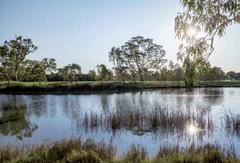
36 FEBRUARY 2019 www.indianlink.com.au INVEST IN TOWNHOMES FROM $450,000 2019 IS YOUR YEAR. Secure your family’s future with a new home in the heart of South Morang close to amenities, with links to the city and planned infrastructure growth. 360 MCDONALDS RD, SOUTH MORANG TRILOGYPLACE.COM.AU Artist’s Impression Westfield Plenty Valley - 7min walk The Lakes Reserve - 5min drive South Morang Train Station - 13min walk For more information or a private appointment Call 1300 559 758 Visit the Sales Suite: 4/24 Oleander Drive, Mill Park Open: Everyday 11am - 4pm (Thursday: 1pm - 6pm)



















































 Rajni Anand Luthra
Rajni Anand Luthra

















































































































































































































































